Philips PML8709 is a model that stands out in the offering of the Chinese-Dutch manufacturer due to its uniqueness. Instead of the classic Philips operating system - TitanOS, we find the well-known Google TV, which provides extensive personalisation options and access to a vast library of apps. This is a television that, on one hand, entices with very good contrast, and on the other – surprises with several unusual design decisions. In terms of picture quality, the PML8709 offers excellent contrast, which combined with wide colour gamut coverage ensures great colour reproduction – especially after calibration. Despite having a 60 Hz panel, the television performs well in occasional gaming thanks to support for features such as ALLM, VRR, and a low input lag of around 13 ms. On the flip side, Philips has deprived this model of one of the biggest advantages of its TVs – the Ambilight system. This is a surprising move that may disappoint many brand fans. Another weak point is HDR performance – despite promising contrast results, the television performs averagely in this category. Average brightness and issues with detail in brighter scenes give the impression that something has clearly gone wrong in the implementation of this feature. Philips PML8709 is a television full of contrasts. On one hand, it offers solid black quality and interesting solutions for gamers, while on the other – some limitations, such as the absence of Ambilight or average brightness, mean that it is not a model without flaws. It is a good choice for those who appreciate the versatility of Google TV and are looking for a television for everyday use.
- Matching (Score)
- Our verdict
- TV appearance
- Where to buy
- Contrast and black detail
- HDR effect quality
- Factory color reproduction
- Color reproduction after calibration
- Smoothness of tonal transitions
- Image scaling and smoothness of tonal transitions
- Blur and motion smoothness
- Console compatibility and gaming features
- Input lag
- Compatibility with PC
- Viewing angles
- TV efficiency during daytime
- Details about the matrix
- TV features
- Apps
- Playing files from USB
- Sound
Philips PML8709 vs SAMSUNG QN80F
Direct compare
QN80F

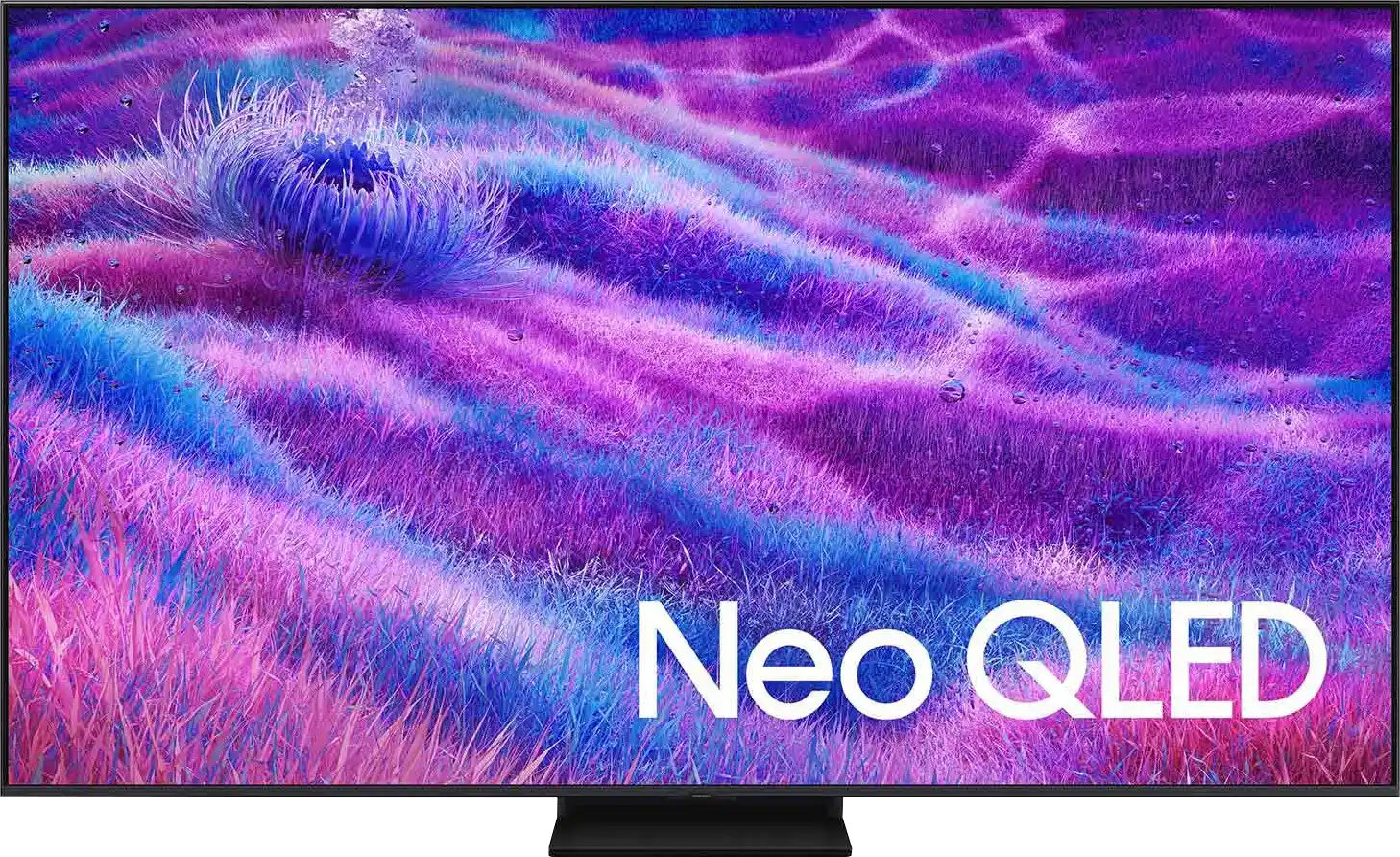
Panel type: LCD VA
Resolution: 3840x2160
System: Google TV
Model year: 2024
Complete the survey to find out the result

Panel type: LCD VA
Resolution: 3840x2160
System: Tizen
Model year: 2025
Complete the survey to find out the result

Overall rating
6.1
7.3
Movies and series in UHD quality
6.3
6.9
Classic TV, YouTube
6.6
6.8
Sports broadcasts (TV and apps)
5.6
6.7
Gaming on console
7.2
8.5
TV as a computer monitor
3.5
8.8
Watching in bright light
4.8
6.6
Utility functions
6.5
7.7
Apps
9.6
8.7
Sound quality
5.1
6.7
Complete the survey to find out what fits your preferences
Advantages
Google TV operating system – intuitive and versatile
Very good contrast
Very good coverage of the DCI-P3 and BT.2020 colour gamut
Low input lag - around 13 ms
Support for ALLM, VRR and HGiG in gaming mode
Great black levels and contrast - VA panel combined with MINI-LED backlighting.
Excellent brightness - up to 1000 nits in HDR
Fast and responsive panel - 144 Hz
Robust support for gamers - 4xHDMI 2.1, VRR, ALLM, GameBar, Game Motion Plus
Very good usability in daylight
Advanced Tizen operating system
Easy to use
PiP function
Disadvantages
The quality of the HDR effect leaves a big sour taste
No Dolby Vision
Not suitable for PC work
No Ambilight system
No DTS format support – a limitation when connecting a home theatre system
No USB recording function
Relatively few dimming zones
Issues with the HGiG function (for gamers) – the update removed this option*
Our verdict
QN80F is the first in the history of Samsung's "eighty range" to feature Mini LED backlighting. And it does it really well. Although the number of dimming zones isn't staggering, the black levels are solid, and in combination with high brightness, it allows for a very decent picture in HDR content. Additionally, there's a 144 Hz panel that provides excellent motion fluidity, and the gaming features – VRR, ALLM, Game Motion Plus – make the QN80F an option truly designed for those gaming on consoles or PCs. The television operates quickly and responsively, and the Tizen system runs like lightning – whether you’re searching for apps or switching sources. Is there anything to nitpick? Of course, as always – there are shortcomings in the system (like USB recording), DTS support is absent, and Mini LED comes with its own limitations. But the QN80F is a fantastic everyday television – versatile, refined, and... with great price potential. Looking at the history of this series, we can expect that this "eighty" will still shake things up once it hits the first reasonable promotions. And then it could be virtually unbeatable at its price – especially if Samsung fixes the minor teething issues.
TV appearance





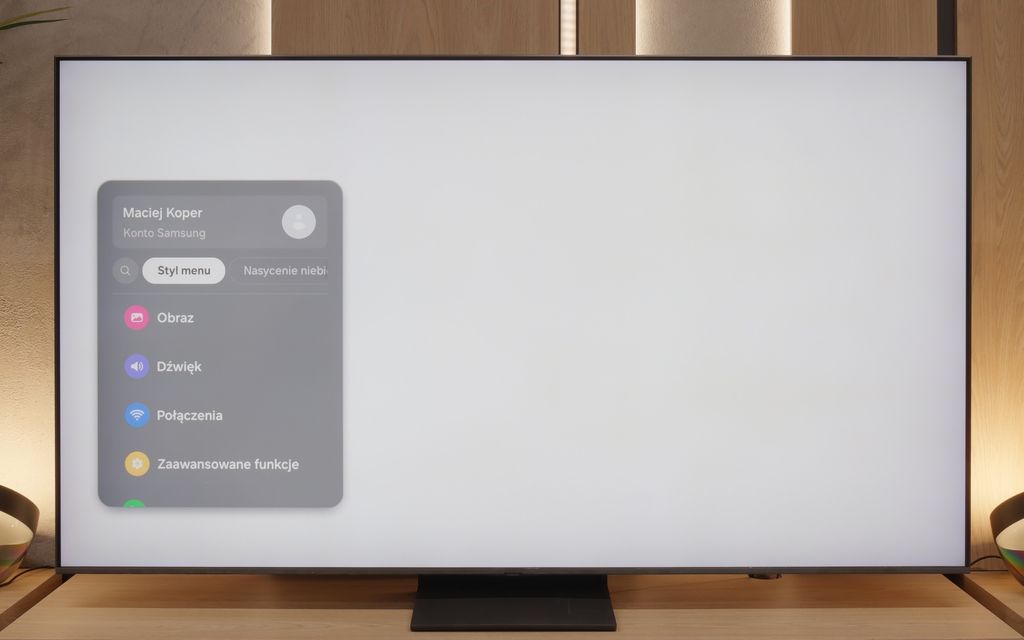
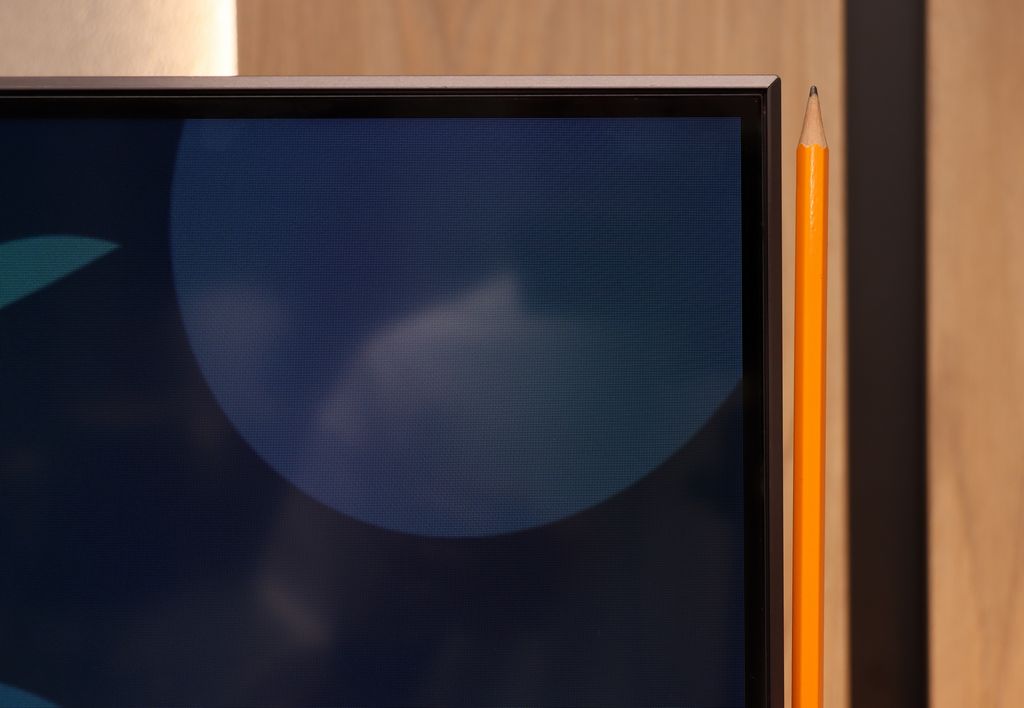
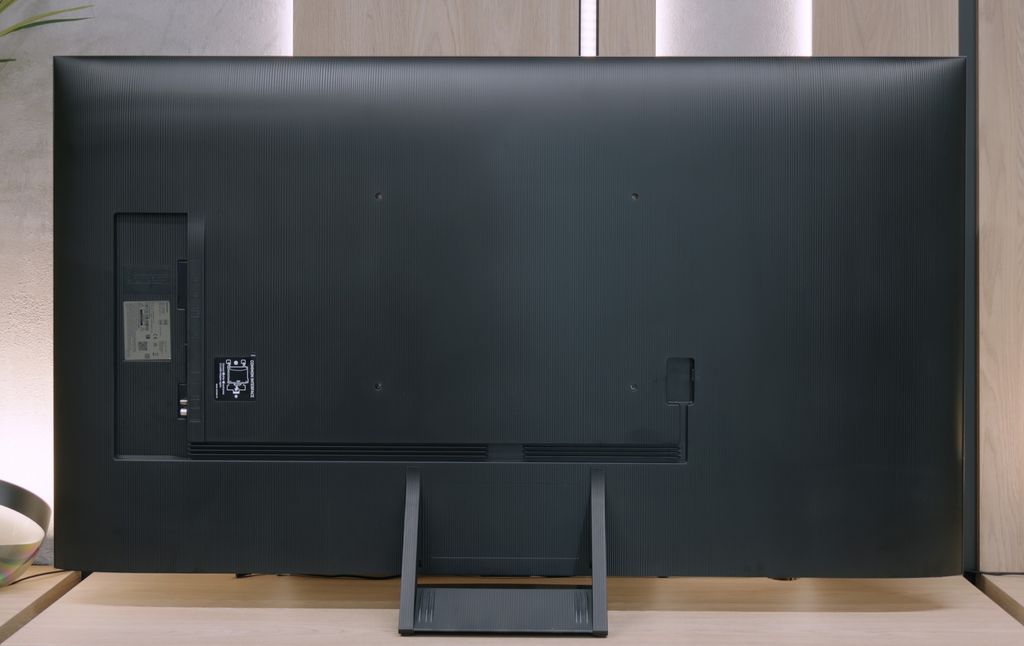
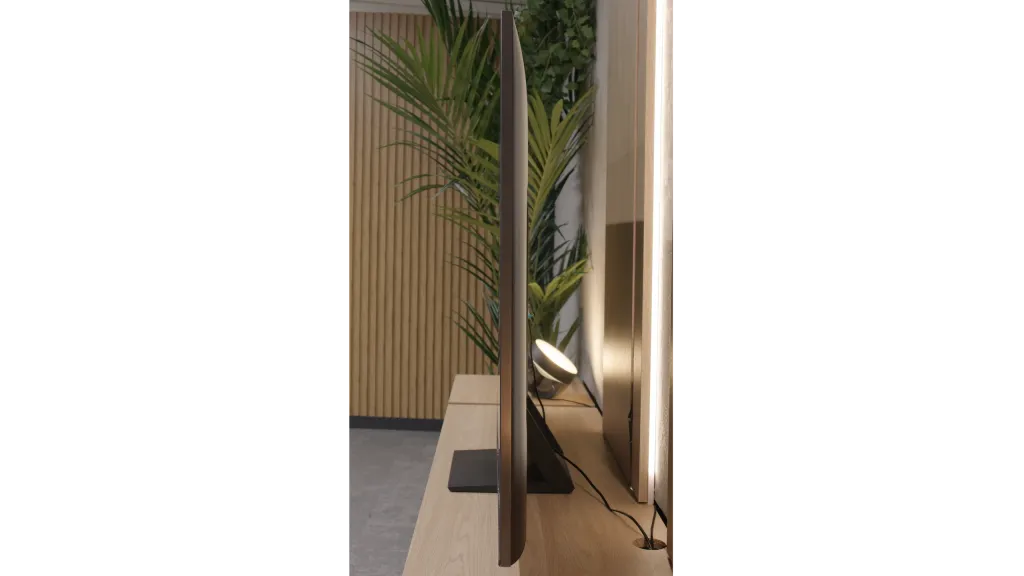
Contrast and black detail
7/10
6.8/10
Local dimming function: Yes, number of zones: 96 (16 x 6)
Local dimming function: Yes, number of zones: 88 (8 x 11)
Contrast:

Result
58,650:1

Result
37,150:1

Result
10,850:1

Result
6,150:1

Result
5,100:1

Result
34,100:1

Result
8,200:1

Result
32,500:1

Result
4,550:1

Result
3,800:1
Halo effect and black detail visibility:

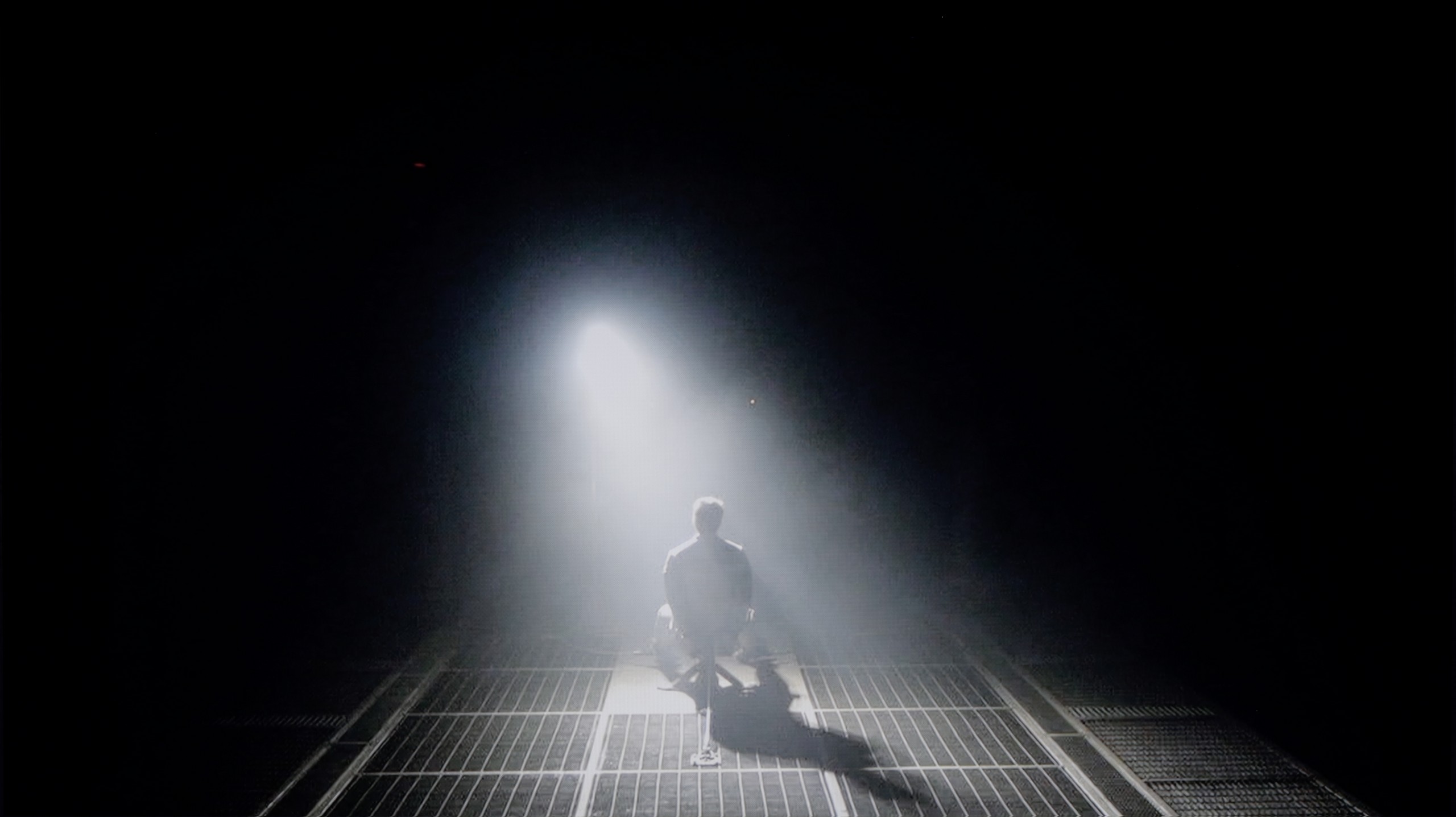
The model name 8709 “PML” refers to Philips' mini-LED technology, but can we truly call its backlighting that? In the 65-inch version, we counted only 96 local dimming zones. For mini-LED standards, this number seems too low, raising questions about whether we are indeed dealing with a full-fledged mini-LED here. However, if we look at the black quality, the TV performs quite well. On the first two test patterns and in less demanding scenes, the picture looks very decent – blacks are deep and the contrast is satisfactory. Problems begin with more complex scenes, such as the last three test patterns, where minor light elements appear on screen. The local dimming algorithm seems to “lose track,” unable to decide whether to brighten or darken a particular area. The result is noticeable errors – reduced black quality and unevenness in the image. An example of the operation of local dimming zones can be seen in a scene from the film Sicario 2. You can see how the dimming zones attempt to replicate details, but at the same time, this leads to a slight brightening around the helicopter lights. Nevertheless, despite these shortcomings, the black level in the Philips PML8709 turns out quite well, especially considering its price range.
QN80F is a representative of the Neo QLED series, meaning it is a television with Mini LED backlighting. Unlike its cheaper cousin, the QN70F model, the diodes here are placed directly behind the panel (instead of at the edges), which gives a solid advantage from the start when it comes to contrast control. In the 65-inch variant we tested, we counted 88 dimming zones – a result that may not be very impressive, but as it turned out, sufficient to achieve quite decent results.
In tests based on scenes from films such as Oblivion or The Meg, the QN80F performed well – blacks were deep, and the overall image consistency was eye-catching. However, in more demanding moments (e.g., scenes with a large number of bright details on a dark background), a halo effect appeared. This is where the limitation of the number of zones comes into play – bright elements could bleed around, and some details in dark areas became less visible. In one scene with a helicopter (The Meg), we even noticed slight brightness flickering, as if the television was trying its best to maintain visibility of the details at the expense of black depth.
However, these are not issues exclusive to this model – the halo effect or contrast drops in very complex scenes are something that most Mini LED televisions struggle with, even the more expensive ones. In its class, the QN80F still performs positively and offers noticeably better contrast than the QN70F model with edge lighting. For most users, this will be a level more than sufficient – although not perfect.
HDR effect quality
4/10
5.8/10
Luminance measurements in HDR:

Result
367 nit

Result
126 nit

Result
309 nit

Result
119 nit

Result
348 nit

Result
799 nit

Result
533 nit

Result
717 nit

Result
245 nit

Result
656 nit
Scene from the movie “Pan” (about 2800 nits)


Scene from the movie “Billy Lynn” (about 1100 nits)


Static HDR10


Dynamic: HDR10+
Dynamic: HDR10+


HDR luminance chart:
SAMSUNG QN80F
HDR luminance
Philips PML8709
HDR luminance
Looking at the contrast results, we expected that the algorithms responsible for the zones in the Philips PML8709 would be at least decent. However, what we encountered during testing is difficult to explain. The average brightness we managed to achieve was just 350 nits, which is definitely too low to fully enjoy HDR effects. In practice, the TV barely stands out compared to an average SDR. The situation becomes even more surprising in test scenes, such as the second one from the movie Life of Pi or Sicario 2. Small light elements achieve just 120 nits there, making them practically imperceptible. Such a level of brightness is completely below modern HDR standards and significantly diminishes the experience of watching high-quality content. The only bright spot in this category is the very good coverage of wide color gamuts – DCI-P3 at 97% and BT.2020 at 83%. This ensures that colors are saturated and well-reproduced, which can somewhat improve the overall experience of watching HDR materials. However, the lack of adequate brightness means that even this cannot save the Philips PML8709 in this category.
QN80F is quite a bright screen – in synthetic tests, it reached nearly 1000 nits, which allows for reasonable expectations of HDR content. And indeed, in many scenes, the TV can truly shine. Sequences with a lot of light – like shots from the movie Life of Pi or wide, bright surfaces in The Meg – look impressive. Brightness stays around 700 nits, which provides a solid effect, enough to feel the true "HDR magic." Unfortunately, not every scene looks this good. In content with small, bright details on a dark background, like in Sicario 2, the TV can struggle – it can significantly dim individual elements, sometimes to the point where they disappear from the image. This is a result of the limited number of dimming zones, forcing the device into compromises: either stick to inky blacks or sacrifice some detail. QN80F usually chooses the former. As a consolation, it offers quite decent coverage of a wide color palette – DCI-P3 at 93%. It's not the highest score on the market, but it's more than enough for most content on streaming platforms.
Factory color reproduction
3.9/10
6/10


Factory Mode
After calibration


Factory Mode
After calibration
Though theoretically the Filmmaker mode in the Philips PML8709 should provide natural colour reproduction, in reality it resembles a store mode more. In the white balance, both for HD and 4K content, there is a clear dominance of blue. This causes the image to appear washed out and cold, which is particularly noticeable in the comparative image below.
The brightness characteristics also leave much to be desired. Both gamma and the EOTF curve exhibit excessive screen brightness. As a result, there is a loss of detail in both the brighter and darker areas of the image, further diminishing its credibility and naturalness. Bright elements appear unnaturally flat and little varied.
These significant issues with white balance and brightness characteristics lead to noticeable errors in colour reproduction, which can easily be seen in films as well as the Colour Checker test. The colours are inaccurate, affecting the overall image quality and visual experience. The factory settings require significant improvement in order to fully enjoy the potential of this television.
We always test TVs in the best available factory mode – for the Samsung QN80F, this is the Filmmaker mode, and indeed, it provides the settings closest to the creators' intentions. However, this doesn’t mean everything looks perfect. In SDR content, the biggest issue was an unbalanced white balance – slight deficiencies in green and a noticeable excess of red led to noticeable colour errors, and one could say the screen had a pinkish hue. This was clearly visible in the colour checker test, where colours “escaped” outside their target fields – to such an extent that a sensitive viewer's eye could catch it even without the help of a meter.
In HDR content, the white balance was much better, but another issue arose – brightness management. The EOTF curve caused an overly bright image most of the time, which affected the perception of contrast and made the screen slightly “flicker” during dynamic changes in light. We’ve already discussed this in the paragraphs about black levels and HDR. Fortunately, Samsung offers users plenty of options. The QN80F features a rich set of calibration options, including a 20-point white balance – which is why we decided to check what this TV is really capable of after a proper calibration.
Color reproduction after calibration
7.6/10
8.3/10




Philips offers advanced image calibration tools in its televisions, which we decided to fully utilise. The results? Although we managed to improve many aspects, it wasn't without difficulties. White balance was one of the biggest challenges – despite our efforts, it could be called fighting against windmills. We were able to significantly correct it, so the picture now looks much better than in the factory settings, but it is still far from perfect. Especially in some scenes, a subtle dominance of blue is visible, although not as intense as before. We achieved a significant improvement in brightness characteristics – gamma now appears much more stable. The EOTF curve looks correct at first glance, however, when analysing movie content, it is evident that the television has trouble maintaining the proper characteristics. The algorithms are "struggling", trying to adjust brightness, which may be due to the limited number of dimming zones that do not always handle more complex scenes well. Overall, the picture after calibration looks much more pleasing to the eye – colors are more natural, and colour reproduction errors have been minimised. Although it is still not perfect, the Philips PML8709 now presents itself much better than in the factory settings.
After conducting a thorough calibration, it was possible to bring most image parameters to a really good level. The white balance in both SDR and HDR presents itself almost perfectly – the image is natural, neutral, and free from the previously noticeable redness. Colours have gained depth, and the overall visual experience has become more pleasant and cohesive. It was also possible to partially manage brightness, which in the factory version could cause issues. The EOTF chart shows that the television performs much better with brightness after calibration – there is no longer excessive dimming of certain elements. In films, it can still be noticed that the QN80F has a tendency to slightly brighten the smallest bright details – this is already a consequence of the device's construction and the limited number of dimming zones. In short: not everything can be overcome, but what was possible has been improved. After calibration, the QN80F makes a really good impression, looking simply more mature and professional.
Smoothness of tonal transitions
9.1/10
9/10





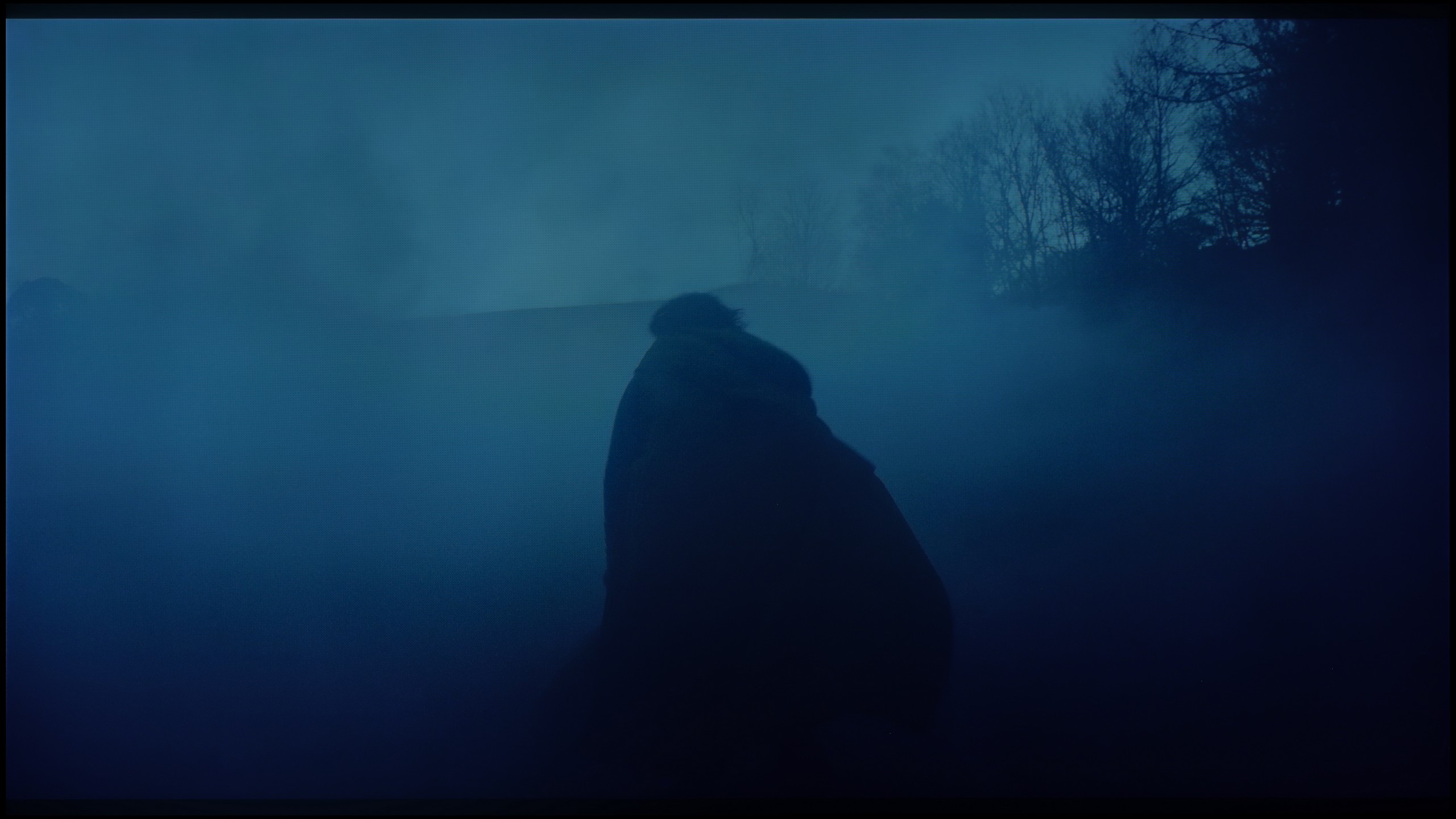

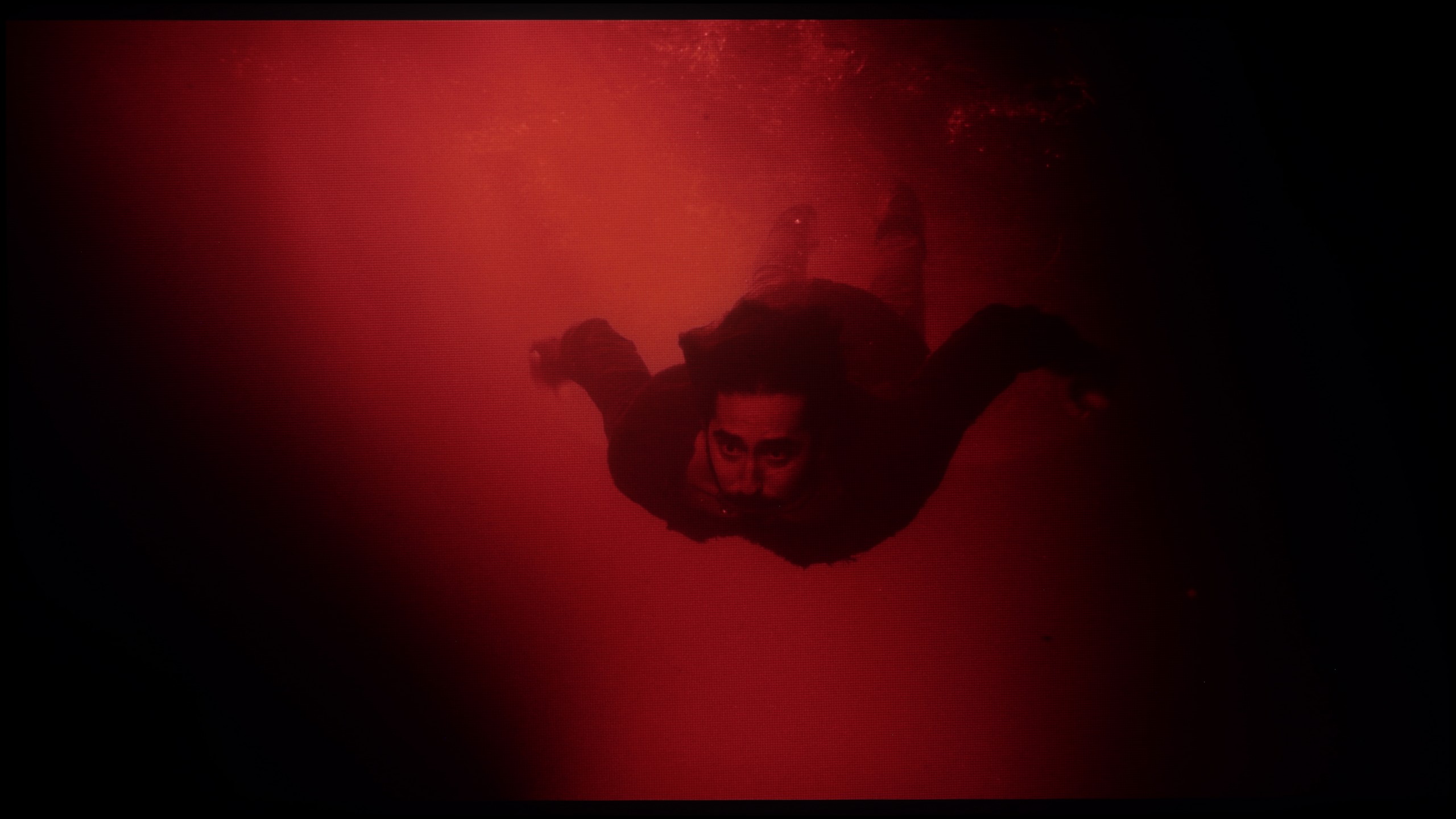




The fluidity of tonal transitions in the Philips PML8709 is at a very high level. The colour gradation is incredibly smooth, and the transitions between shades look natural and detailed. Even in more demanding scenes, the television performs excellently. Minor issues may arise with bright elements, where the gradation can be slightly less precise. However, these are such subtle differences that only the most demanding purists will notice them. For most users, the effects will be fully satisfying, and the image will maintain its impressive quality.
In this regard, the QN80F really delivers. Transitions between colours are smooth, nothing tears, and there are no annoying bands in the sky or strange spots in the shadows. Movie scenes in darker tones performed particularly well – and that's where most televisions start to struggle. If you really focus, you might notice slight banding in the brightest areas, but that's really stretching it. In everyday viewing, no one should have a problem with this. To put it simply: the tonal transitions are so good that you can forget about them – and just enjoy the movie.
Image scaling and smoothness of tonal transitions
6.9/10
7/10
Smooth transition function

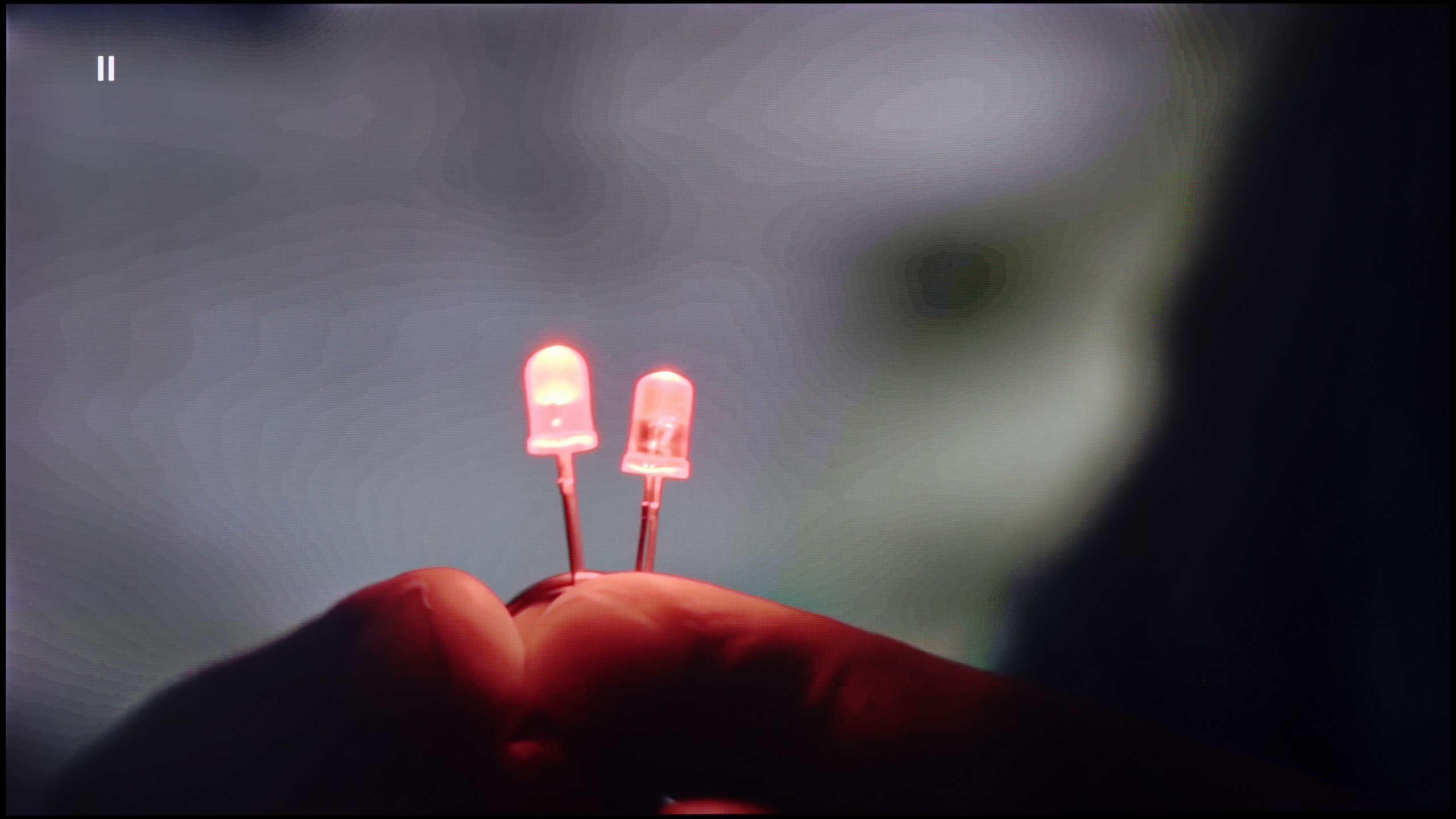
Image without overscan on the SD signal


The distortion reduction feature in the Philips PML8709 smooths tonal transitions, but its effectiveness leaves much to be desired. We recommend setting this option to "Medium" - at this level, the effect is noticeable but not excessive. Unfortunately, compared to other Philips models, the smoothing effect is less effective, meaning that certain tonal transitions may still appear somewhat uneven. An additional drawback is that this feature also smooths other details, such as the textures of materials like shirts, which can affect image sharpness.
As for image scaling, the television performs very well. The image appears smooth and free of noticeable "jaggies". This effect may appeal to many users, although some might prefer a more vivid look. Fortunately, the television allows for adjustment of the sharpness parameter, enabling us to tailor the image to individual preferences.
If you notice strange colour transitions or unwanted artefacts while watching lower quality materials – for example from YouTube – it's worth checking the settings and enabling the noise reduction feature. In our opinion, the best setting is at the 'medium' level – it effectively smooths out problematic colour transitions without overly blurring the entire image. However, it's important to know one thing: this option tends to remove film grain. If someone values preserving that effect (e.g., in older films), it's better to simply turn it off – regardless of the level, the grain always disappears.
Regarding resolution scaling (also known as upscaling), Samsung – as usual – performs very well in this area. The QN80F doesn't quite match the top models costing tens of thousands, but for its price class, it performs impressively. Materials of very poor quality (e.g., from SD television or older video files) are noticeably improved and look surprisingly decent. The only noticeable downside is the typical Samsung issue with overscan – which is a slight cropping of the image edges at very low resolutions, such as 576p.
Blur and motion smoothness
5/10
7.5/10

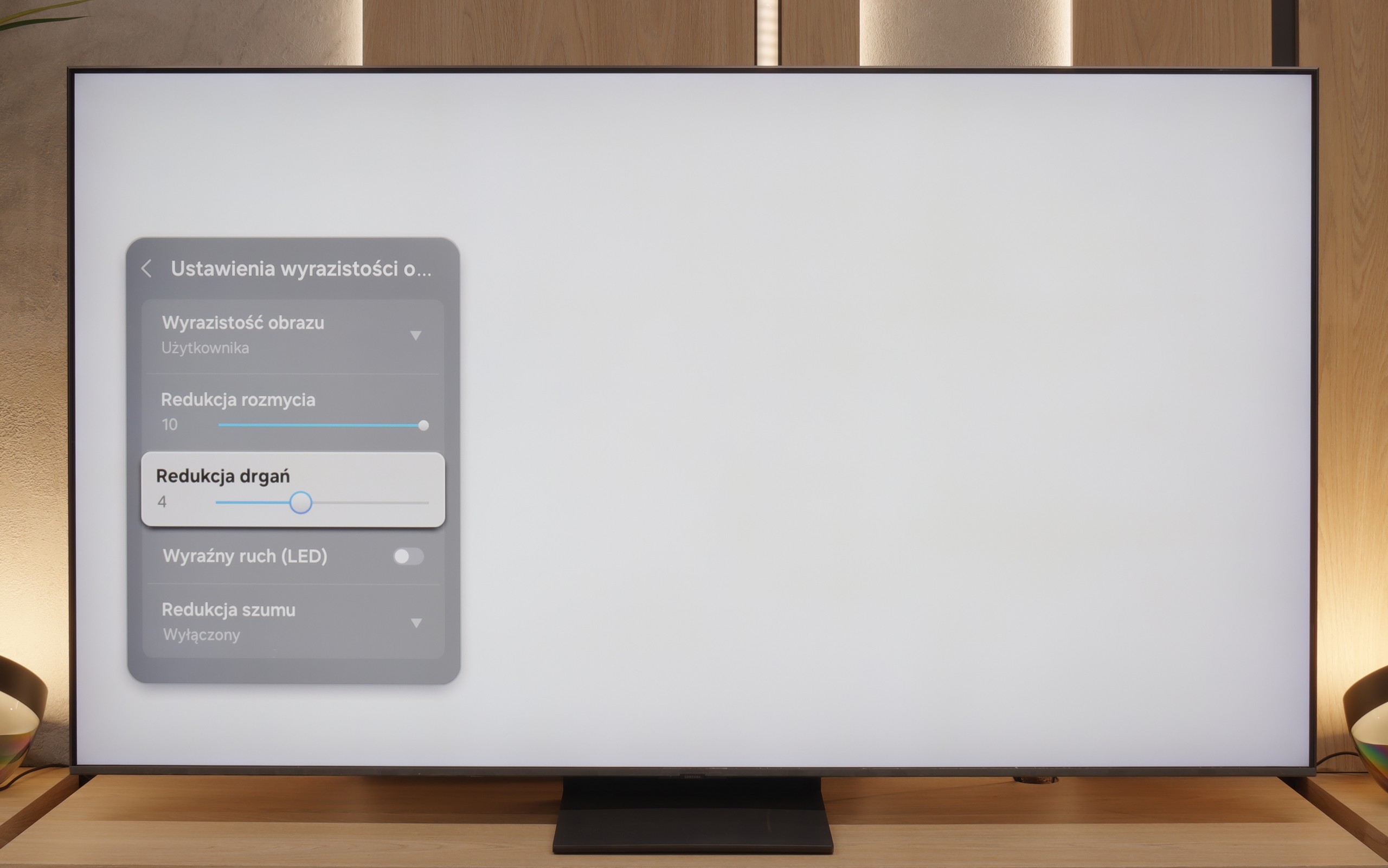
Blur (native resolution, maximum refresh rate):



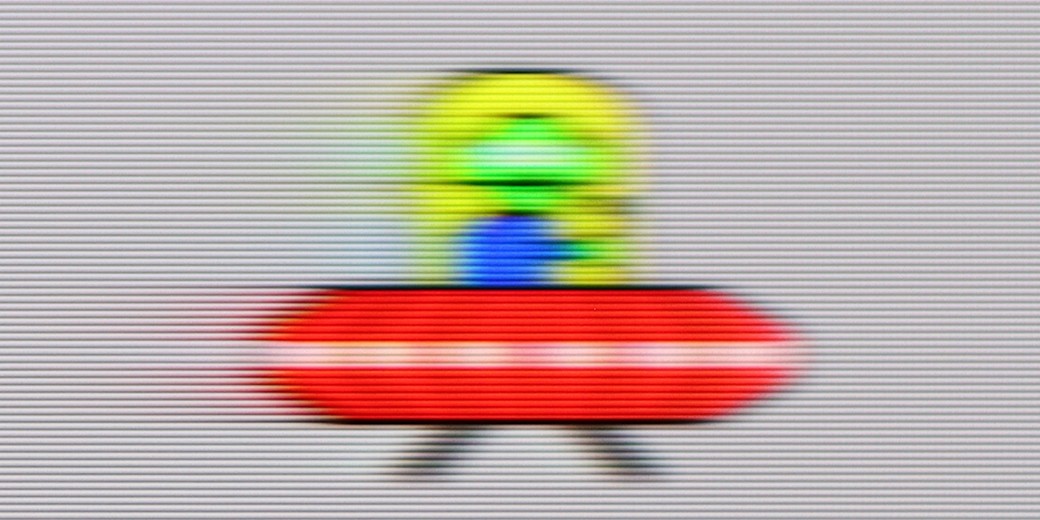
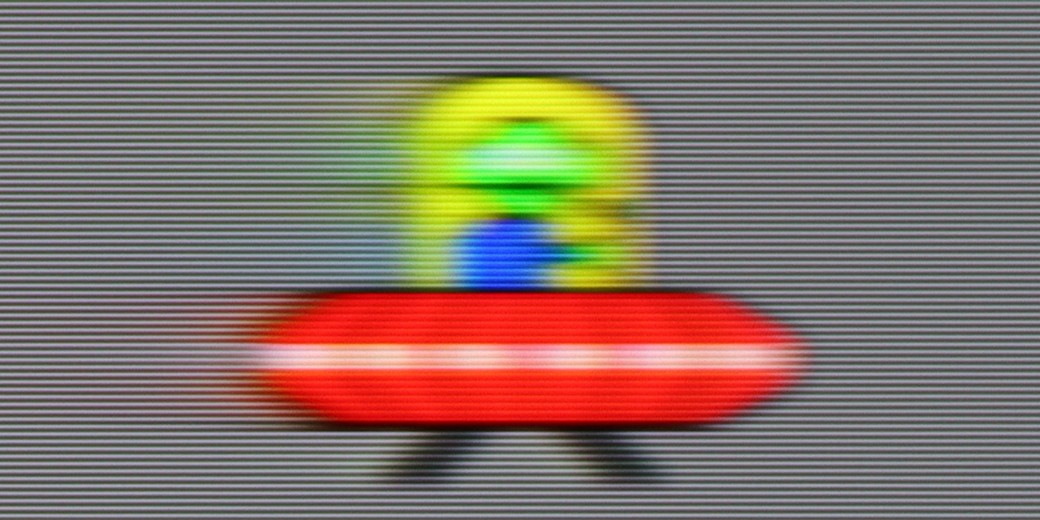

Blur (BFI function enabled):
Image flickers in this mode



Philips PML8709 is one of the few models with mini-LED technology on the market, offering a refresh rate of 60 Hz. While it’s not a panel for the most demanding gamers, it should satisfy those who mainly watch movies. The TV is equipped with a “Motion Style” feature, which is a motion smoother that allows you to adjust the fluidity of motion according to your preferences – from a more “plastic” look to a cinematic aesthetic with clearly visible frames.
QN80F is truly a “fast” TV. The panel used offers a refresh rate of up to 144 Hz, which in practice means that the screen keeps up with the action – whether we’re watching a movie, playing games, or browsing dynamic content online. The image doesn’t stutter, isn’t overly blurred, and everything simply looks smooth and pleasing to the eye. Of course, the manufacturer hasn’t forgotten about cinema fans – in the settings, we find an option to adjust motion smoothness, allowing us to tailor the effect to our own preferences. You can leave a more “frame-y” look (for those who enjoy the classic film vibe) or crank up the smoothness to a higher level to achieve a theatrical smoothing effect. Importantly, the choice is ours. Watching movies and playing on the QN80F is just plain fun.
Console compatibility and gaming features
6/10
8.2/10
- ALLM
- VRR
- VRR range48 - 60Hz48 - 144Hz
- Dolby Vision Game Mode
- Correct implementation of HGIG
- 1080p@120Hz
- 1440p@120Hz
- 4K@120Hz
- Game bar

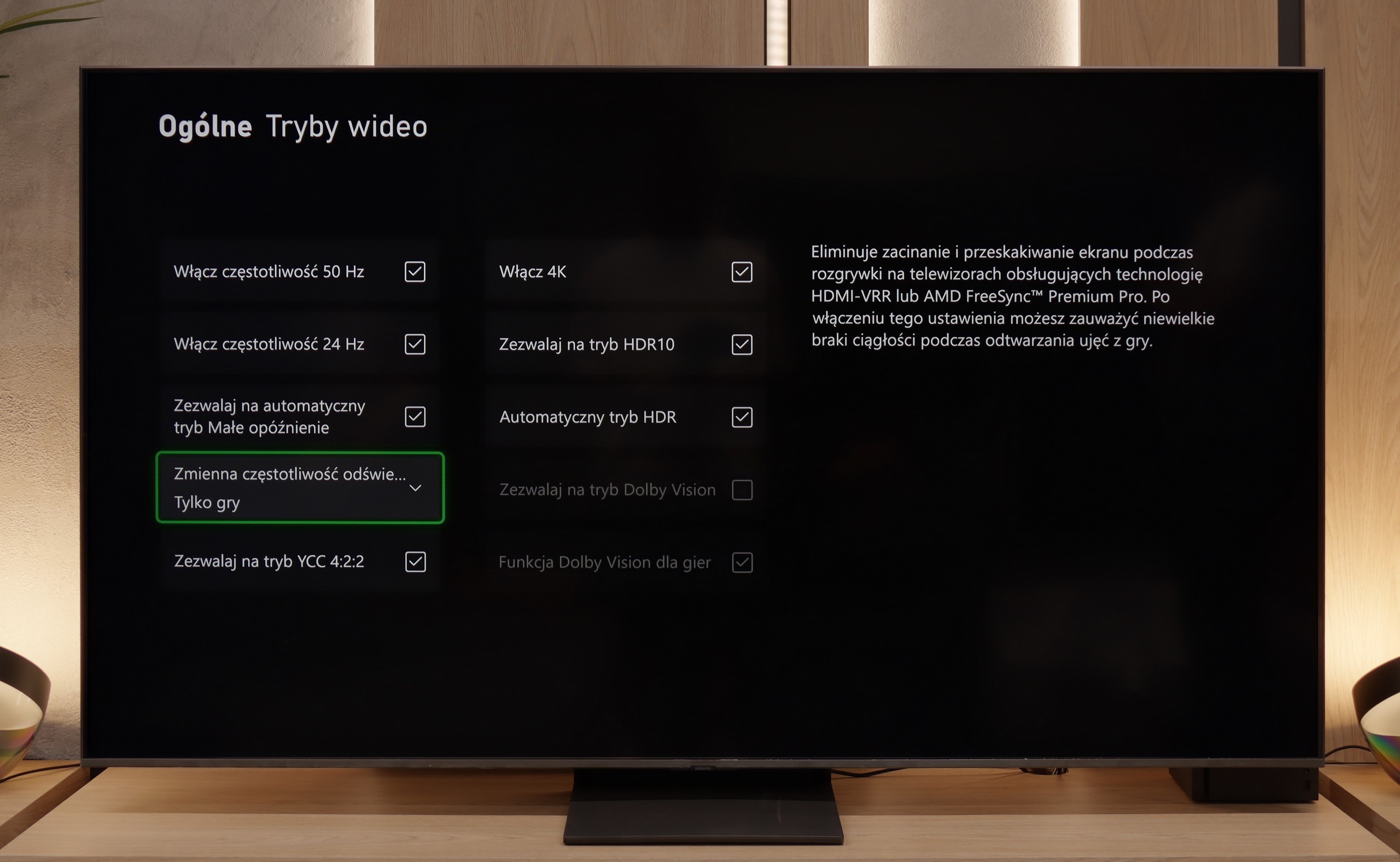

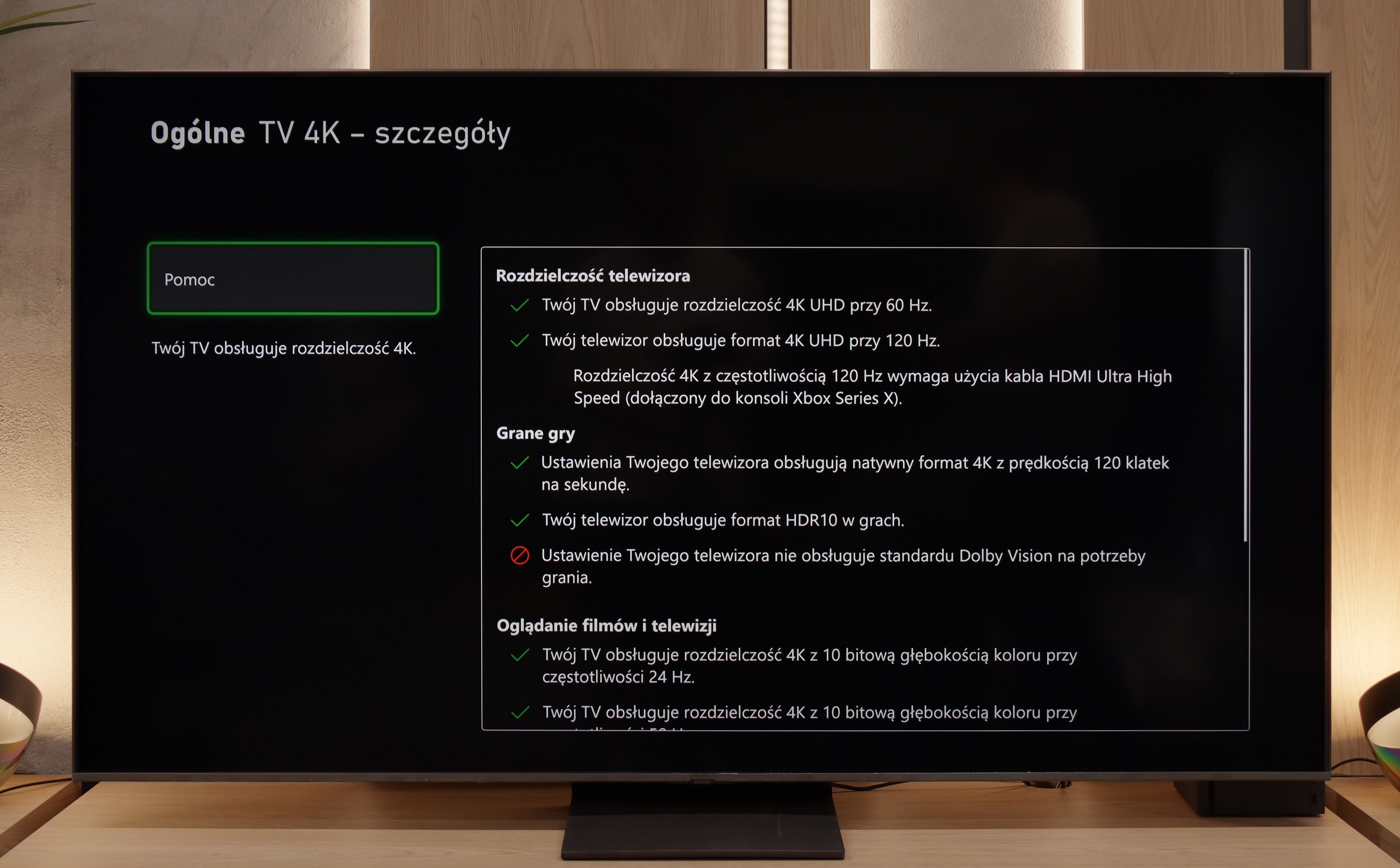

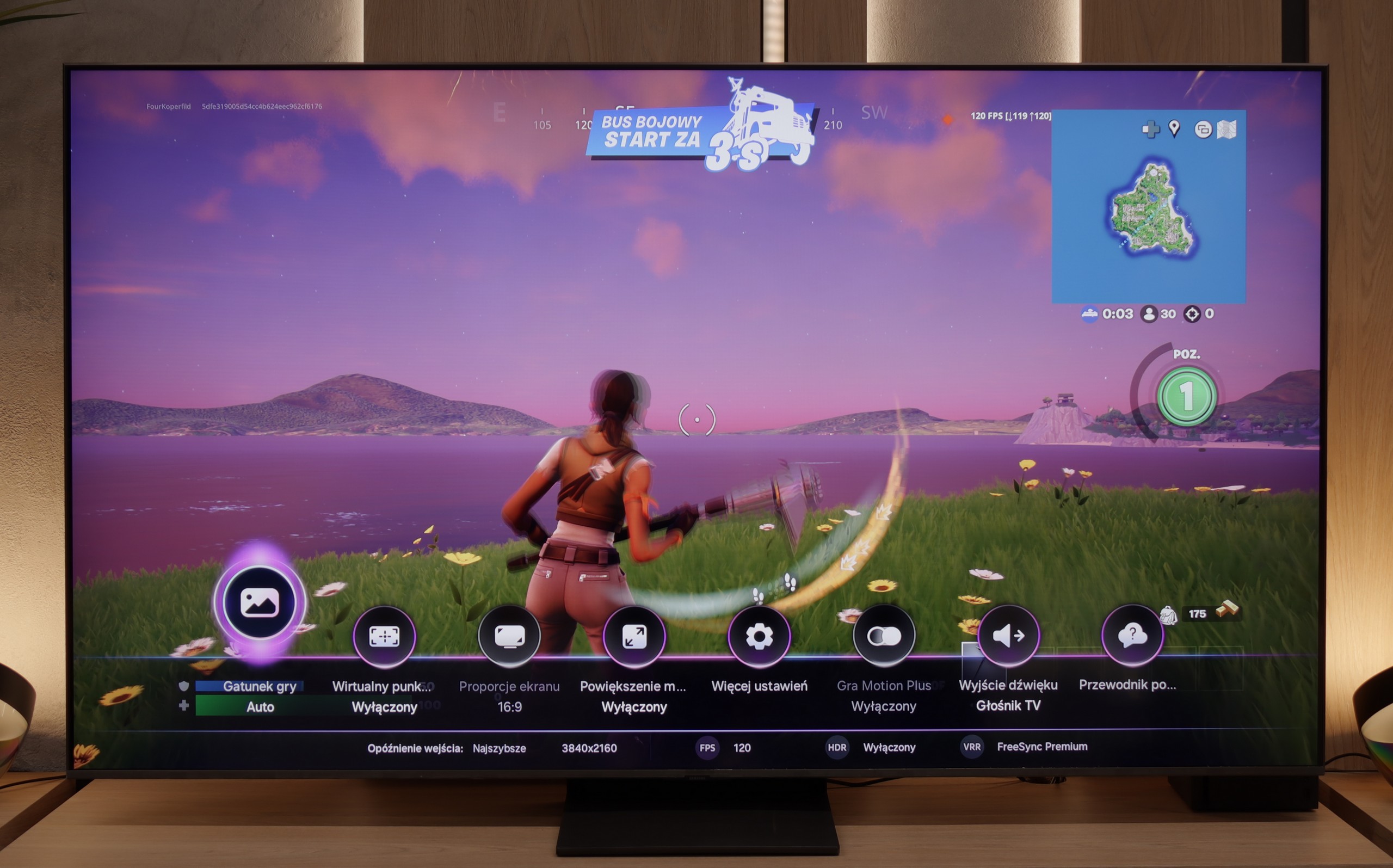

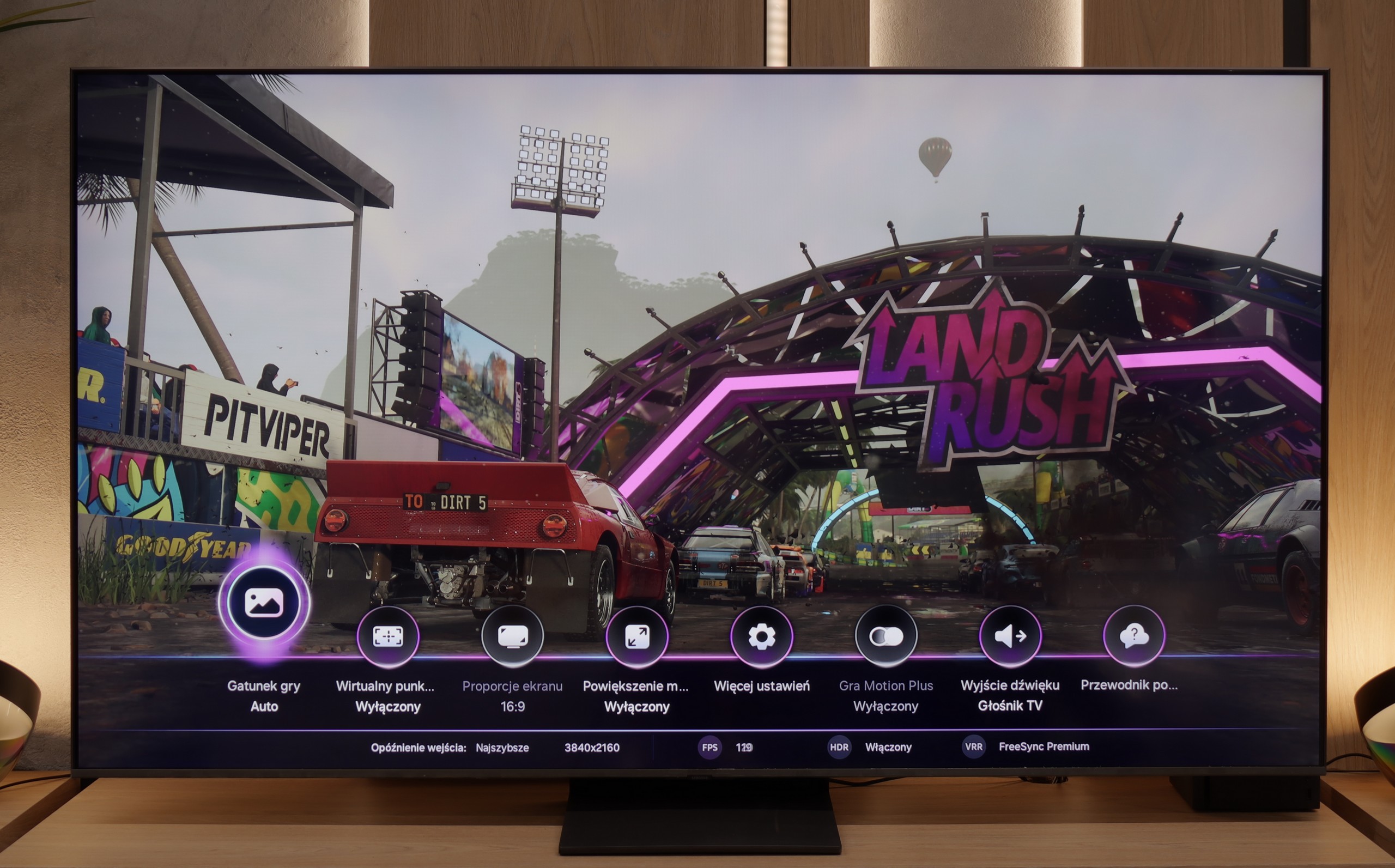
Philips PML8709 is a television aimed more at casual gamers, mainly due to the 60 Hz panel, which won’t meet the expectations of the most demanding users. However, for those who appreciate gaming at a more moderate pace, this model may prove sufficient.
The television offers several gamer-friendly features, such as ALLM (automatic switching to game mode) and VRR (variable refresh rate), which help in providing smoother image display without annoying stutters. Furthermore, in terms of HDR, we find the implementation of HGiG, which adjusts the HDR effect to the specifics of games, ensuring a more natural image in appropriately optimised titles. Unfortunately, there is no support for Dolby Vision mode, which may be noticeable in games that utilise this format.
A nice addition is the presence of a basic "Game Bar," which allows for quick previewing and modification of the most important settings related to gaming. It’s a simple but useful touch, especially for those who frequently change their configuration between different types of gameplay. Despite some limitations, the Philips PML8709 offers a solid set of features for less demanding gamers.
Samsung QN80F is a TV that delivers on almost every front when it comes to gaming. We have a 144 Hz panel, four fully-fledged HDMI 2.1 ports, support for gamers in the form of variable refresh rate (VRR), auto low latency mode (ALLM), and even one of the best-designed game bars on the market. The cherry on top is the motion smoother, which – as the only one in the world – works in games without significantly increasing input lag. Sounds like an almost perfect TV for gamers? And indeed, it’s almost that.
As usual, Samsung does not support Dolby Vision in gaming, but that’s no surprise anymore. However, what is much more surprising is that... the HGIG feature has disappeared – which is a system that allows a console (e.g. PlayStation 5 or Xbox Series X) to precisely match HDR tone mapping to the capabilities of the TV. In the latest firmware update for the 2025 models, this option simply vanished. It looks more like a bug than a deliberate move, but it must be honestly noted that as of the writing of this review, the HGIG feature is simply absent.
And it’s this one missing feature that turns the QN80F from an almost perfect gaming TV into a “nearly” perfect device. It’s a pity – because everything else indicated that Samsung could once again set the bar very high in this generation.
Input lag
10/10
9.8/10
SDR
HDR
Dolby Vision
The Philips PML8709 performs very well in terms of input lag. With supported resolutions, results around 13 ms are more than sufficient to ensure a comfortable gaming experience. Such a reaction time means that even more dynamic games do not cause annoying delays. As a result, gamers can enjoy smooth gameplay without unnecessary stress.
The QN80F doesn't disappoint when it comes to response time. The input lag for 120 Hz content drops below 10 ms, which can be considered an almost perfect result – it's hard to expect more in this class of televisions. Gaming is smooth, responsive, and without delays that could annoy even the most sensitive players. For 60 Hz material, the lag is higher, around 19 ms, but this is a completely natural phenomenon and still falls within comfortable limits.
Compatibility with PC
3.5/10
8.8/10

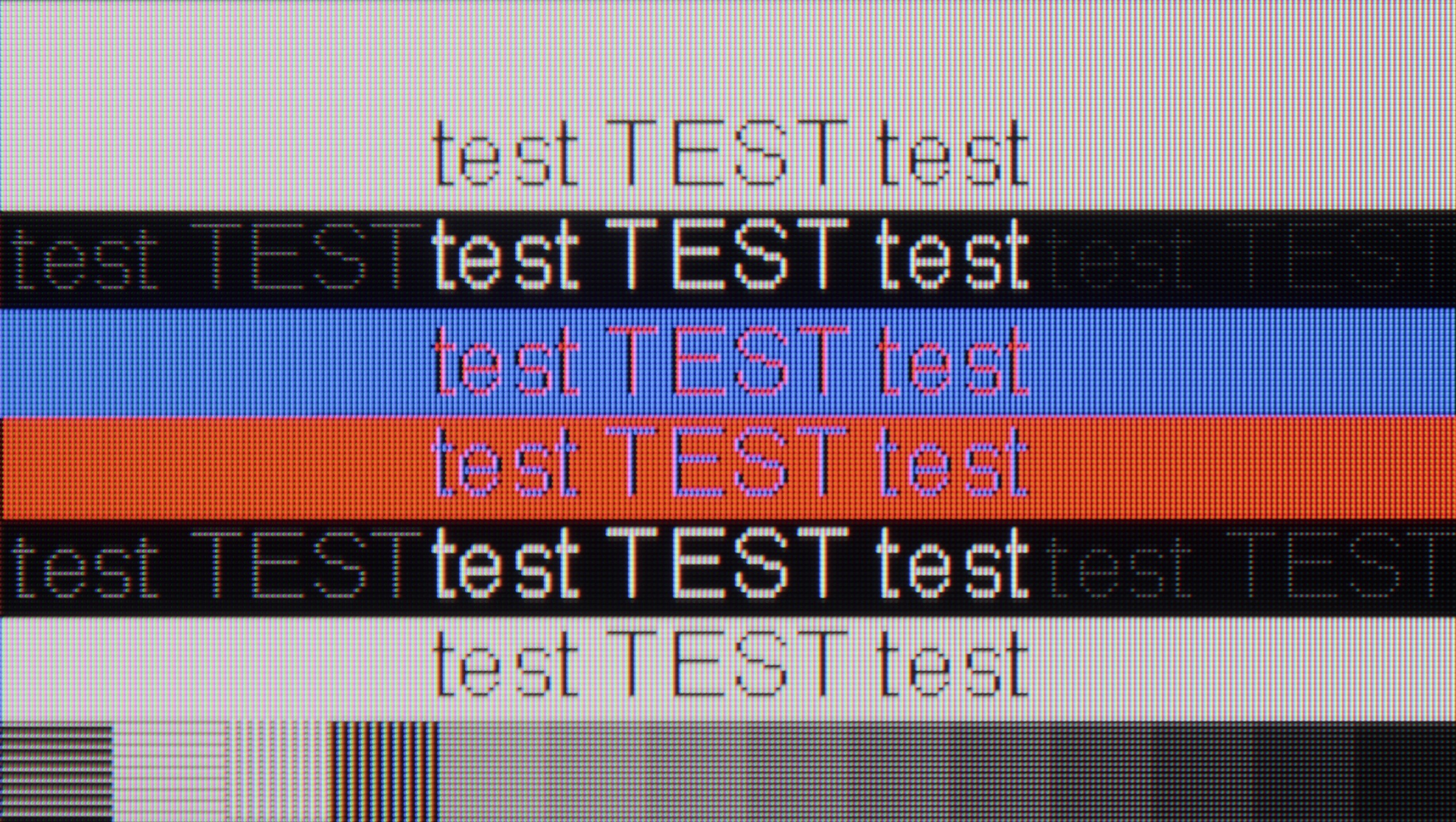
Philips PML8709 offers a dedicated mode for PC, however, its capabilities are significantly limited. The TV does not support chroma 4:4:4, which greatly affects the readability of fonts – text appears blurry and is difficult to read, which disqualifies this model for those planning to use it as a monitor for work or document viewing. Additionally, even though in G-Sync tests the TV showed compatibility, the picture when using this feature is very unstable, with frequent stutters. Such unpredictability eliminates the benefits that should come with support for adaptive sync.
The only positive aspect in the context of PC collaboration is the low input lag, which may be an advantage for those using the TV mainly for gaming. Nevertheless, the limitations in chroma support and issues with G-Sync mean that PML8709 is not the best choice for PC users.
Playing on the QN80F with a computer connected is pure delight. The television works seamlessly with NVIDIA graphics cards (thanks to G-Sync support) and AMD (thanks to FreeSync Premium), and the 144 Hz refresh rate only enhances comfort during fast-paced gaming. Everything works right away, without unnecessary fiddling with settings – just as it should.
When it comes to work, it's very good as well. The readability of fonts is high, and texts look sharp and clear. With very thin horizontal lines, you might notice slight imperfections or shadows, but honestly – you have to take a good look. Unless, like us, you sometimes like to examine the screen with a magnifying glass… then you might spot something 😉.
Viewing angles
2.9/10
3.1/10
Philips PML8709, equipped with a VA panel, offers average viewing angles typical of this type of panel. The image deteriorates in quality when viewed from a greater angle – colours wash out and contrast noticeably decreases. This is a characteristic feature of VA panels and is worth keeping in mind, especially if we plan to watch the TV from different spots in the room. For viewers sitting directly in front, however, the image remains clear and well-reproduced.
QN80F, like most TVs with a VA panel, isn't impressive in terms of viewing angles. Just tilt a bit to the side, and you'll notice a significant drop in brightness and lost colour saturation. The image loses its "depth" and "vividness", and darker scenes may appear slightly washed out. However, this is a typical characteristic of VA panels, which offer significantly better native contrast compared to IPS panels in return. In short: you win some, you lose some. If you're sitting directly in front of the screen – there won't be any issues. But when watching together in a larger group, it's worth keeping this in mind.
TV efficiency during daytime
4.8/10
6.6/10

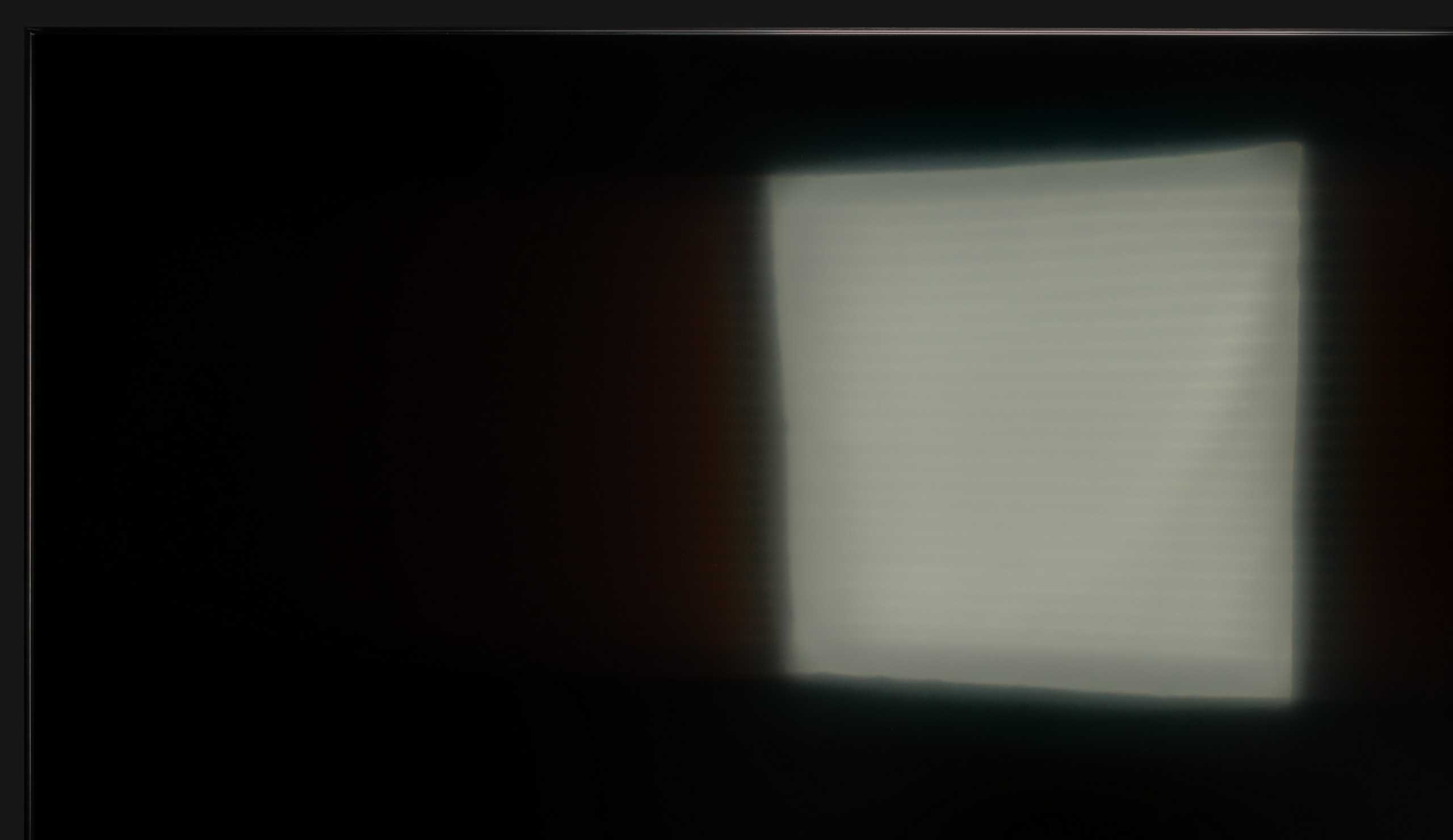


Matrix brightness
Average luminance SDR
SAMSUNG QN80F: 543 cd/m2
Philips PML8709: 337 cd/m2
The Philips PML8709 is equipped with a satin matrix, which average handles glare reduction. In moderately lit rooms, reflections won't be too bothersome, however, in strongly sunlit conditions, the situation may become problematic. An additional challenge is the relatively low screen brightness, at around 330 cd/m². This level may prove insufficient for comfortable viewing in bright rooms, where the image may appear too dark and unclear. The television will perform better in controlled lighting conditions, but for those looking for a model that handles daytime viewing well, this could be a significant limitation.
QN80F is really a bright television. The average brightness in SDR material is around 550 nits, regardless of the scene, which practically means that you can comfortably watch content even in a well-lit room – and there’s no need to close the blinds every time we turn on a film. The new satin coating on the panel also deserves praise, as it handles glare much better compared to last year's QN80D. Reflections are less bothersome, and the screen maintains readability in various lighting conditions. It’s hard to nitpick here – the QN80F performs simply brilliantly during the day.
Details about the matrix
Subpixel Structure:

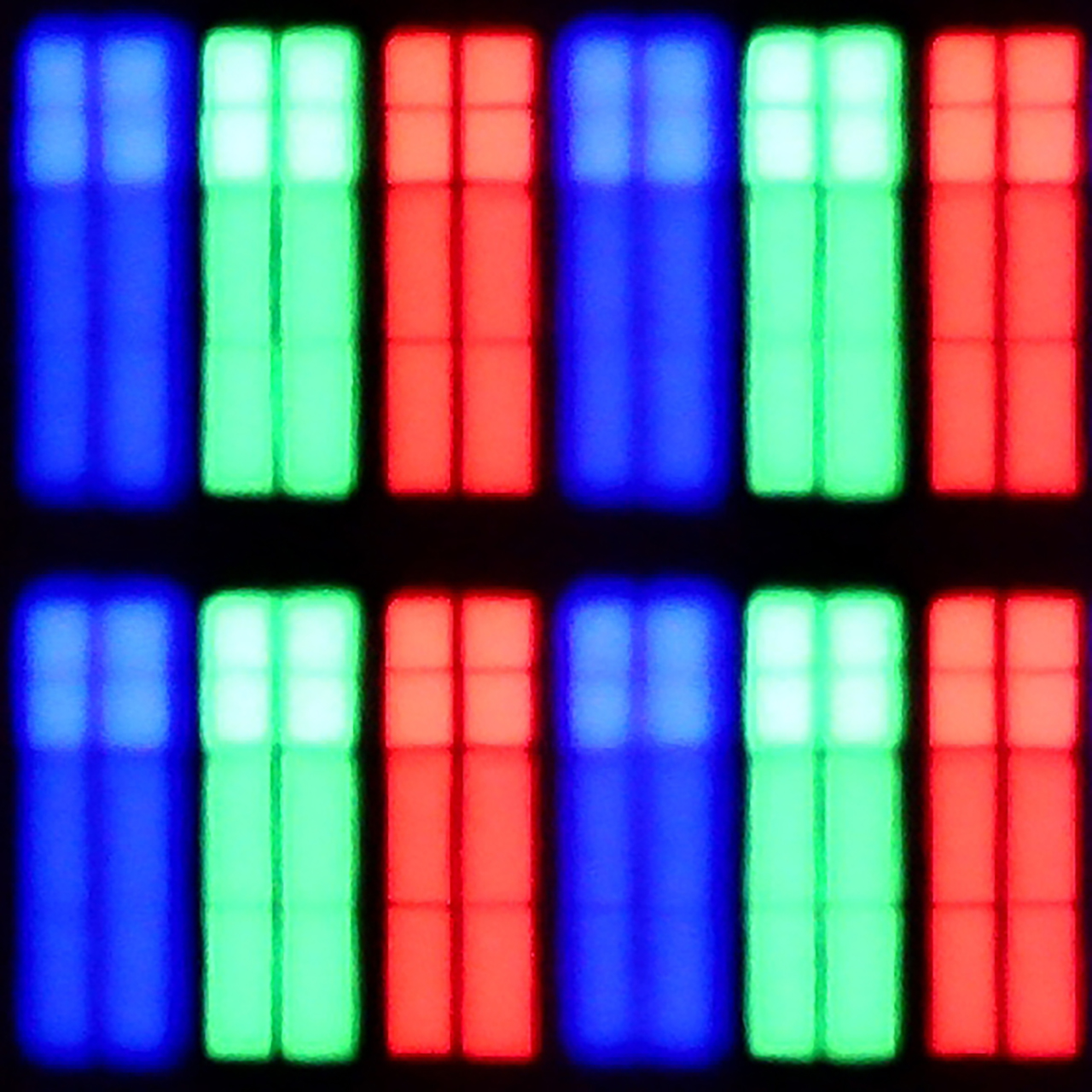
Panel uniformity and thermal imaging:

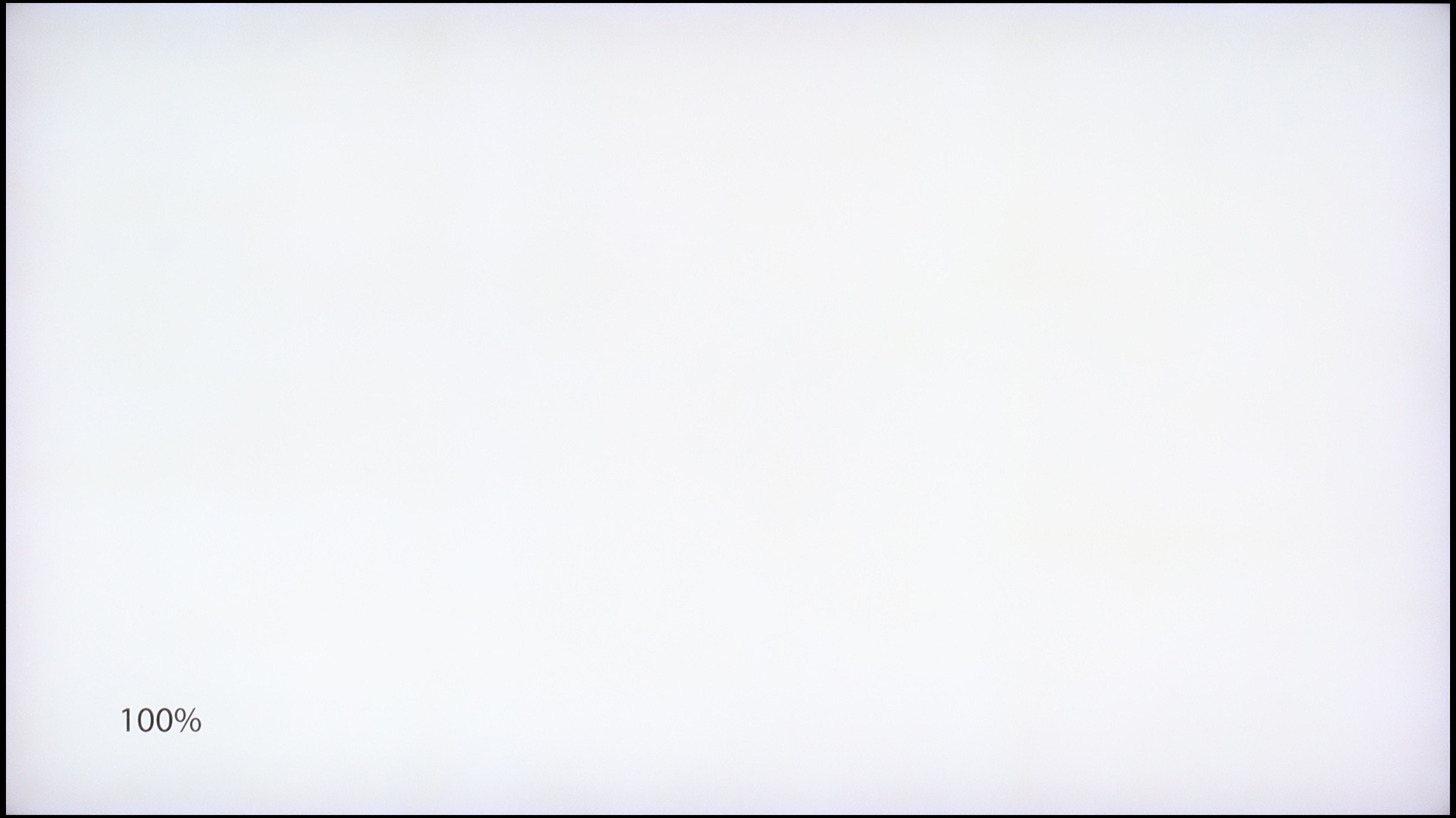
TV features
6.5/10
7.7/10
- HDMI inputs3 x HDMI 2.0, 0 x HDMI 2.10 x HDMI 2.0, 4 x HDMI 2.1 48Gbps
- OutputsToslink (Optical audio), eARC (HDMI), ARC (HDMI)Toslink (Optical audio), eARC (HDMI), ARC (HDMI)
- Network InterfacesWi-Fi 2.4GHz, Wi-Fi 5GHz, Ethernet (LAN) 100MbpsWi-Fi 2.4GHz, Wi-Fi 5GHz, Ethernet (LAN) 100Mbps
- TV receptionDVB-T, DVB-T2, DVB-S, DVB-S2, DVB-CDVB-T, DVB-T2, DVB-S, DVB-S2, DVB-C
Classic features:
- Recording to USB (terrestrial TV)
- Recording programming
- Picture in Picture (PiP)
- RF remote control (no need to aim at the screen)
- Backlit remote control
- Teletext
- Audio only mode
- Bluetooth headphones support
- Simultaneous Bluetooth headphones & TV audio
Smart features:
- AirPlay
- Screen mirroring (Windows Miracast)
- Voice search
- Voice search in native language
- Ability to connect a keyboard and mouse


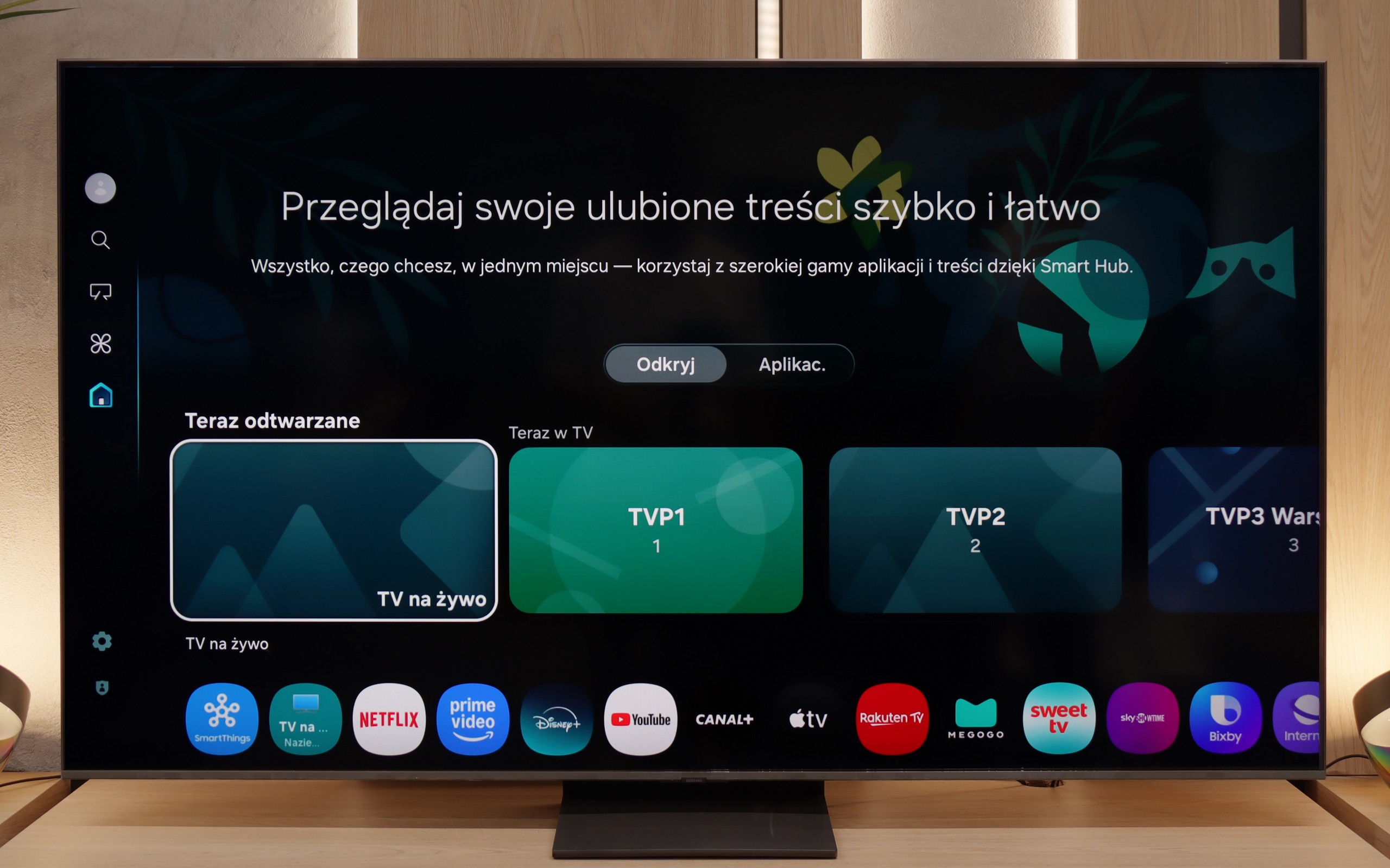
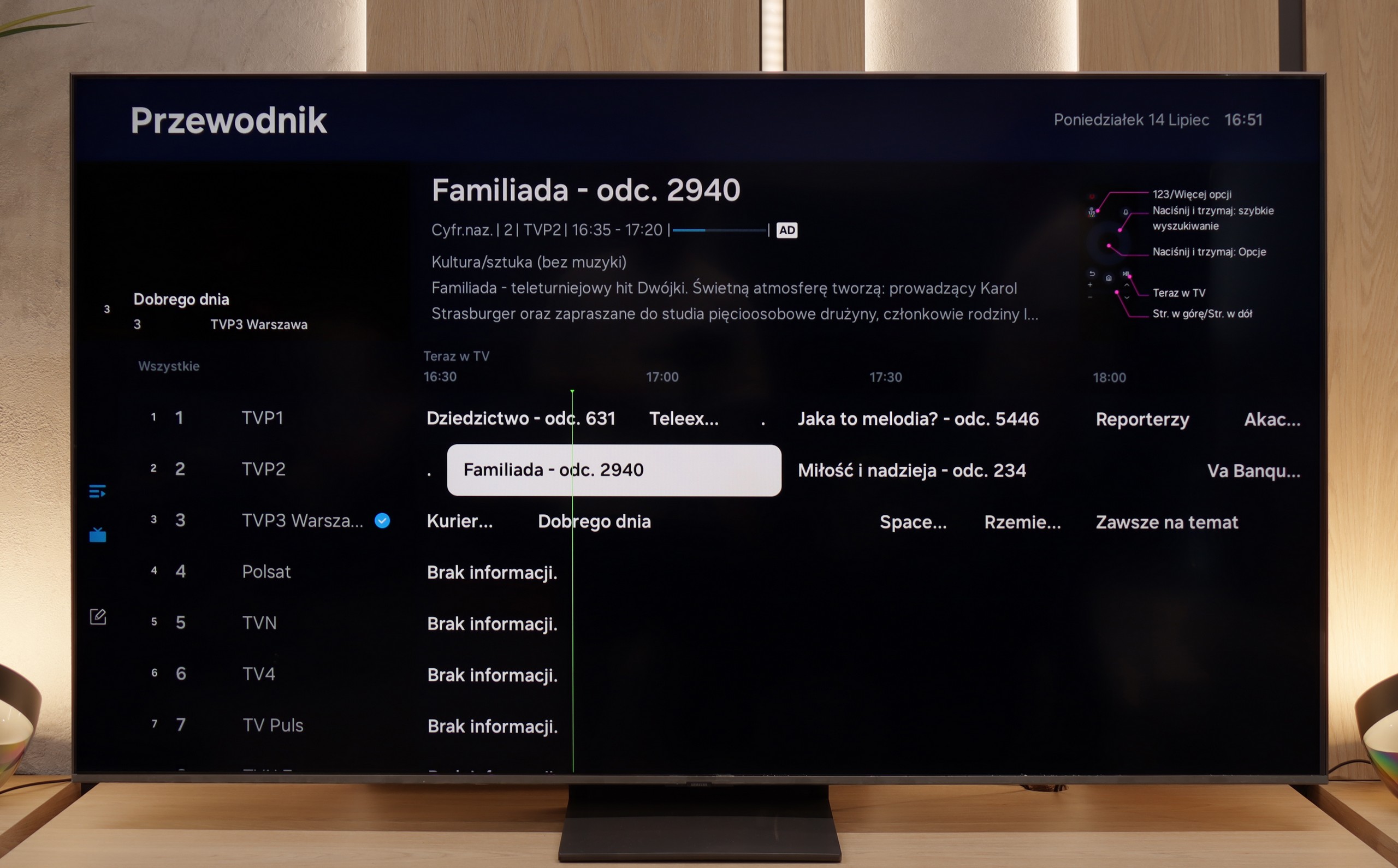
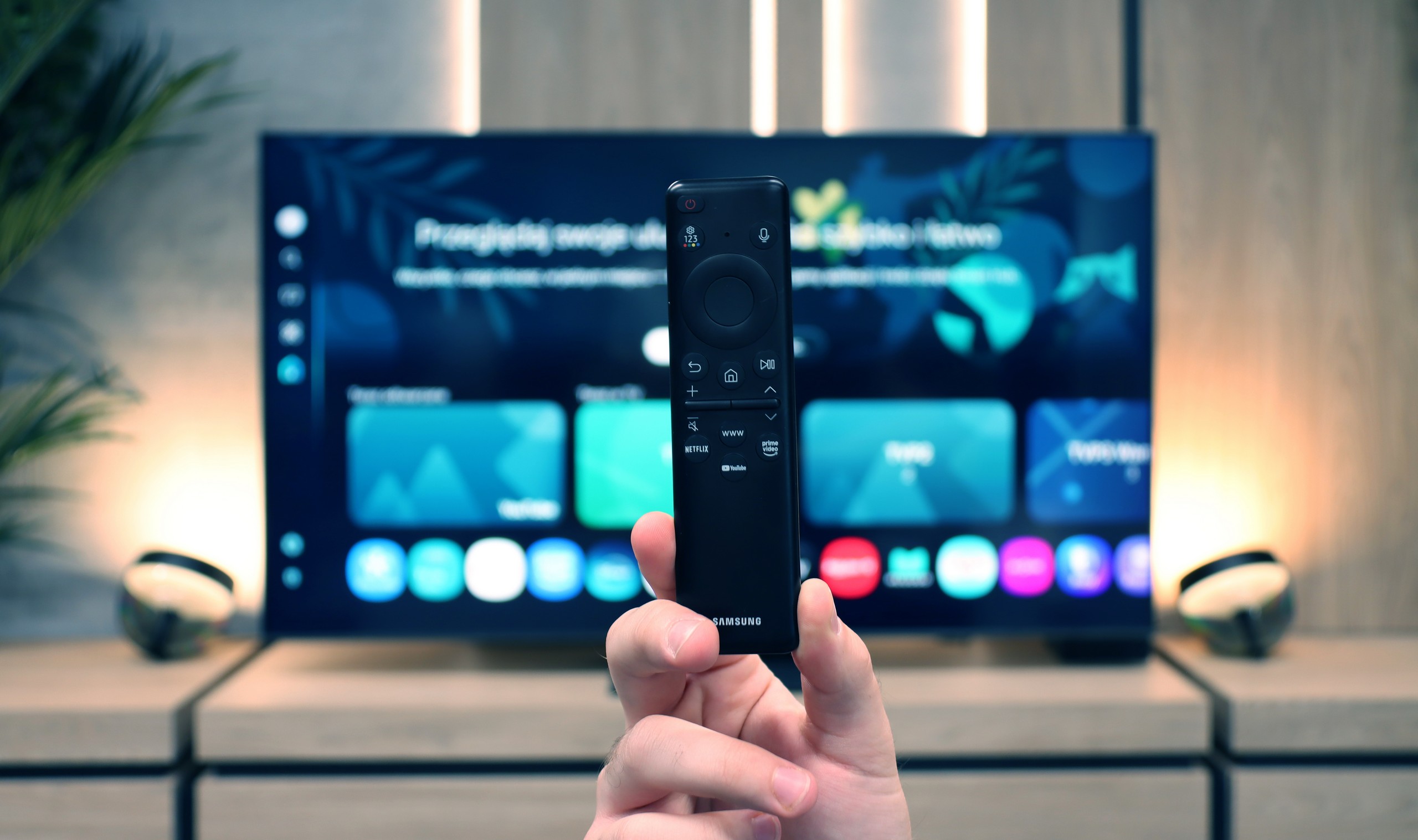
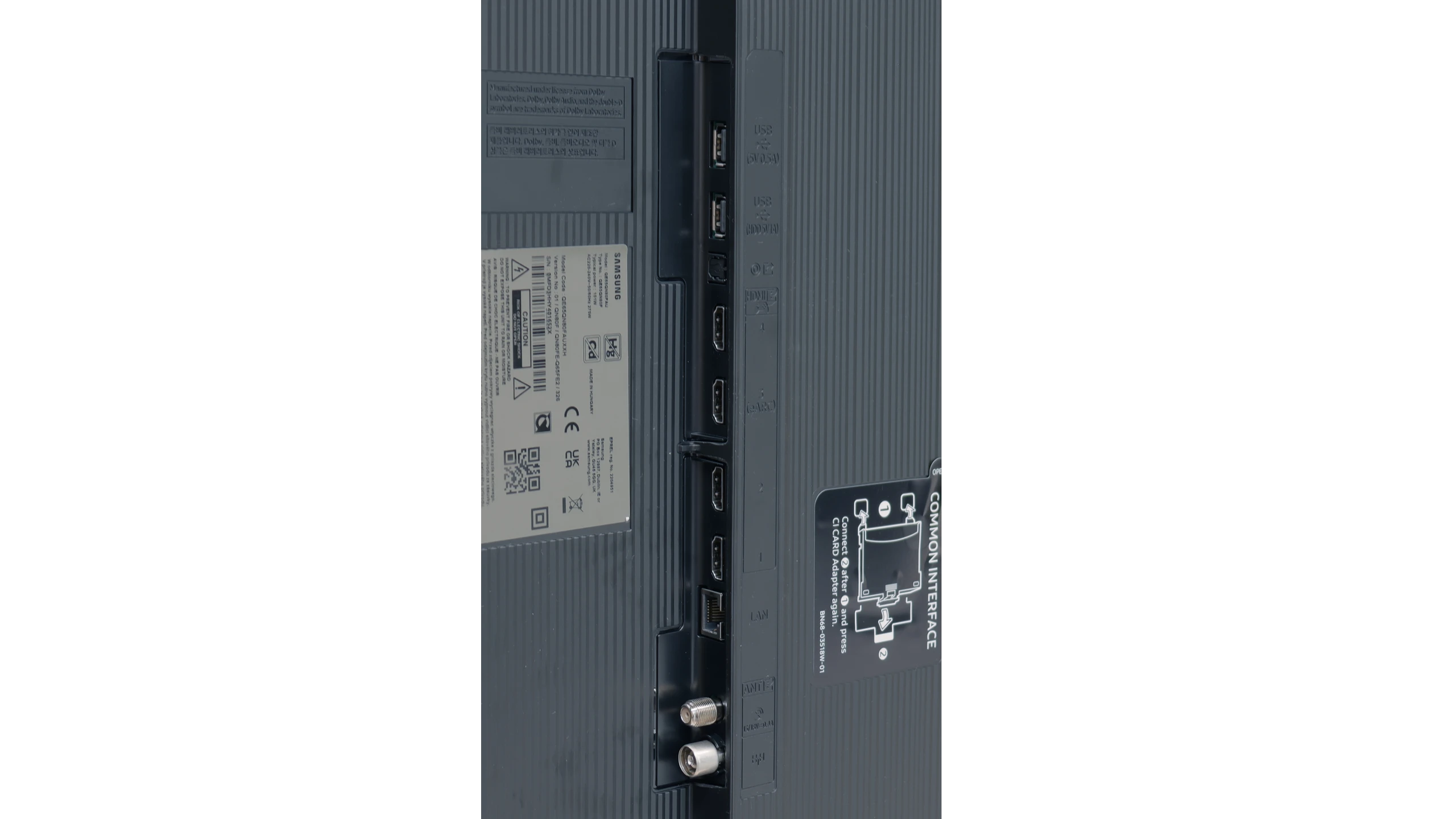
Philips PML8709 runs on the Google TV operating system. This is quite a surprising choice, considering it isn’t the flagship model of the brand. Fortunately, it has avoided the implementation of the less popular TitanOS, which can be seen as a plus. Google TV offers a well-known, clear interface and wide capabilities in terms of app installation, making the television more versatile.
In terms of user features, the television performs solidly. Daily use of the device is enjoyable thanks to support for voice search in Polish. The ability to connect peripheral devices such as keyboards, mice, or headphones via Bluetooth enhances its functionality. Unfortunately, the PML8709 does not offer more advanced options, such as USB recording or the PiP (picture-in-picture) feature, which may disappoint more demanding users.
An interesting fact, and quite a surprise, is the absence of the Ambilight system, for which Philips is commonly known. The decision to omit this technology in the PML8709 model seems puzzling, especially since Ambilight is often cited as one of the greatest strengths of televisions from this brand.
SmartTV QN80F: Tizen
When it comes to smart features, the QN80F has nothing to be ashamed of. On the contrary – Tizen is one of the richest operating systems in terms of functionality. We have voice search, AirPlay support, Miracast and all the major streaming platforms at our fingertips. But Samsung's real advantage reveals itself in the smart home – SmartThings. Not only can you sync light bulbs and vacuum robots, but you can also integrate devices from other manufacturers, thanks to support for the Matter standard. And suddenly it turns out that the QN80F can serve as a home command centre. There is just one "but" – Tizen is a closed system, so we might not find a few lesser-known apps. However, in practice, it still has everything that 99% of users need.
Classic TV features:
When it comes to classic features, it’s just as good – well, almost. The QN80F supports Picture-in-Picture, a rare but still useful PiP feature. We'll easily find EPG, the good old teletext (yes, it works!) and the ability to connect external devices via Bluetooth – whether it's headphones or a soundbar. Unfortunately, it lacks the option to record to USB from the built-in tuners. This is a small annoyance, especially since competitors in a similar price range are increasingly offering this feature. It may not be a must-have function, but since everything else works so well, it’s a shame it's missing that finishing touch.
Playing files from USB
7.6/10
9/10
Supported photo formats:
Maximum photo resolution:

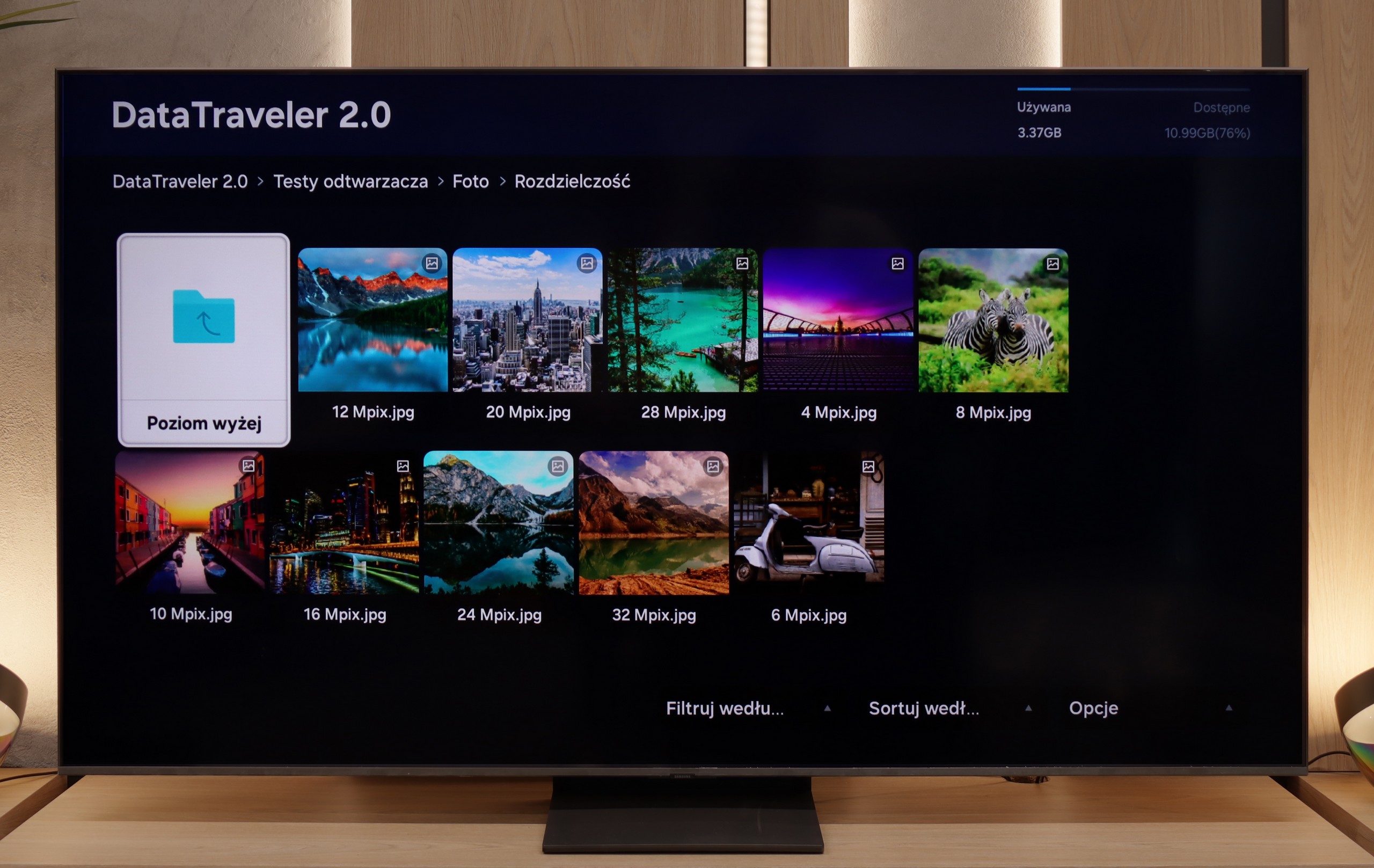
Philips PML8709 handles playing multimedia files from USB well. The television shouldn't have issues supporting most popular video, audio, and photo formats, making it a versatile tool for home entertainment. Files are read smoothly, and the interface of the built-in player is simple and intuitive.
However, a significant downside is the lack of support for Polish diacritics in subtitles, due to the incomplete implementation of the UTF-8 standard. Subtitles with Polish characters are displayed incorrectly, which can be frustrating for those watching films in their native language. This shortcoming means that users seeking full compatibility with subtitles may have to resort to using external media players.
The built-in media player in the QN80F handles most popular video formats – from classic MP4 to more demanding containers. It may not be as versatile as VLC, but for home use, it’s more than sufficient. The situation is worse with photos – here, unfortunately, it’s quite limited. Support mainly includes the JPG format, but hey, at least that’s the most important one 👌. During our tests, there was also a minor issue with subtitles. The QN80F only handled the simple text format .txt – unfortunately, other, more advanced formats (like .srt or .sub) were not recognized.
Apps
9.6/10
8.7/10














































Sound
5.1/10
6.7/10
- Maximum volume-87dB
- Dolby Digital Plus 7.1
- Dolby True HD 7.1
- Dolby Atmos in Dolby Digital Plus (JOC)
- Dolby Atmos in Dolby True HD
- DTS:X in DTS-HD MA
- DTS-HD Master Audio
The sound quality in the Philips PML8709 is average and standard for a television equipped with speakers rated at 2 x 10 W. The audio is sufficient for everyday viewing, but it's hard to expect deep bass or clear details in more demanding scenes. On the positive side, it does support Dolby Atmos and DTS.
For a TV of this class, the QN80F sounds surprisingly good. It supports the Dolby Atmos format, which is worth noting as this is still not obvious in many models in this range. Unlike the thinner QN70F, here you can even feel a slight bass – all thanks to the thicker casing, which simply provides more space for the sound to "breathe". It's perfectly adequate for everyday viewing and series, and with the right settings, you could even consider listening to music without the need to connect external equipment. But – as is the case with Samsung, there is unfortunately a lack of support for the DTS:X format, so if we are using audio devices that support this format, we will first need to connect them to the amplifier and only then to the TV.
Acoustic Measurements
No acoustic data
87dBC (Max)
75dBC


